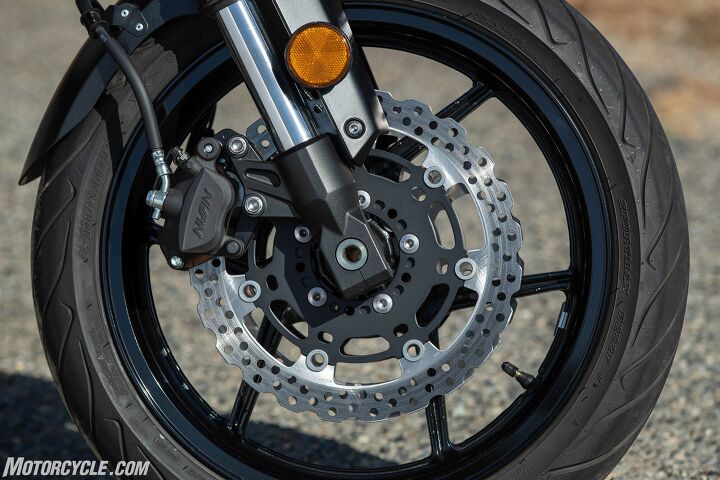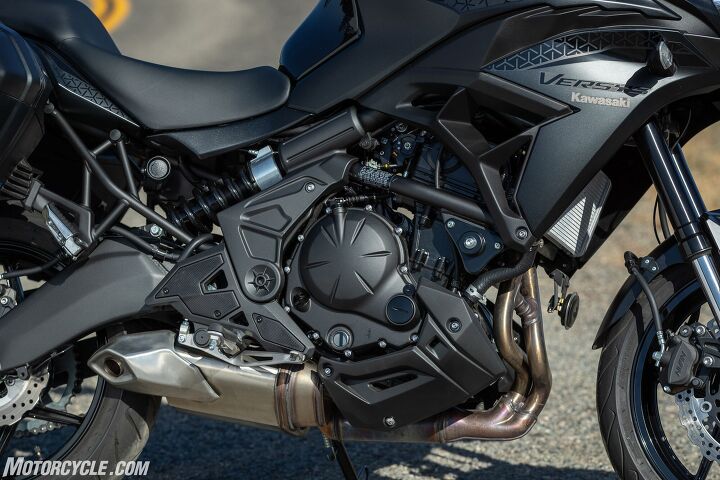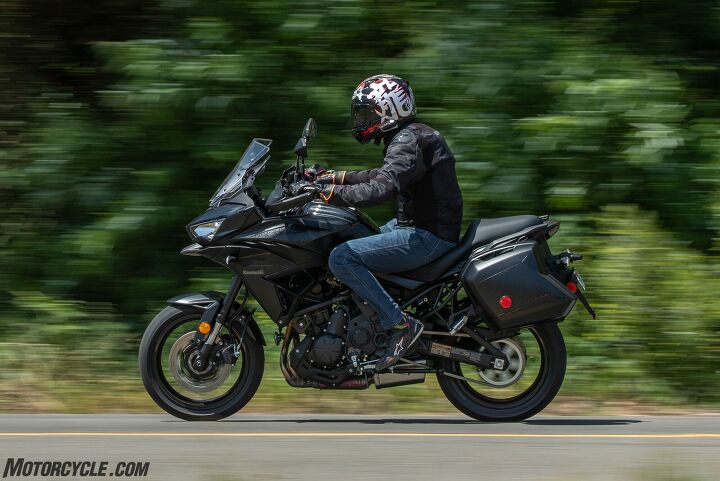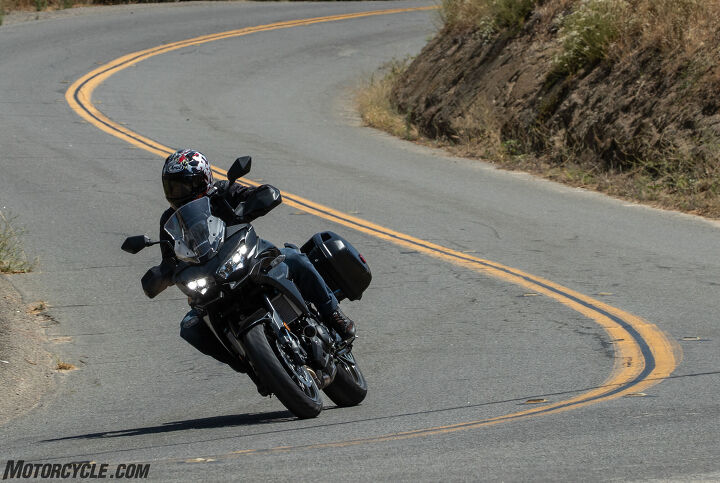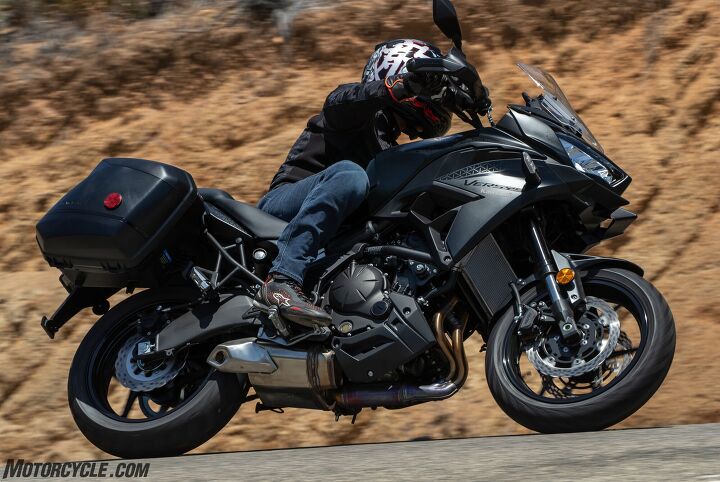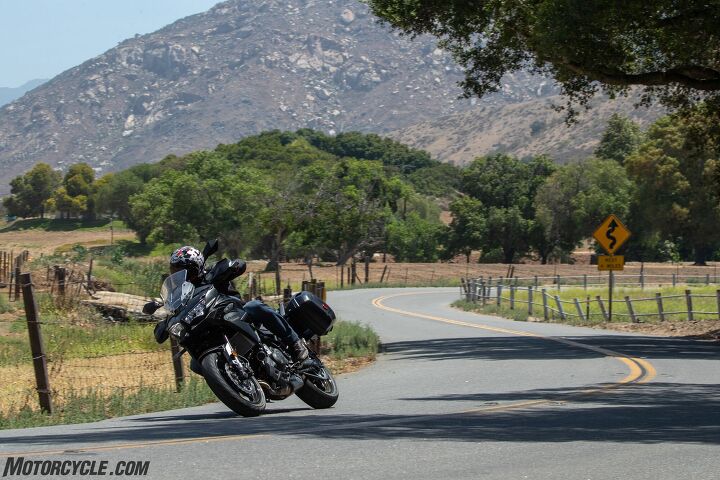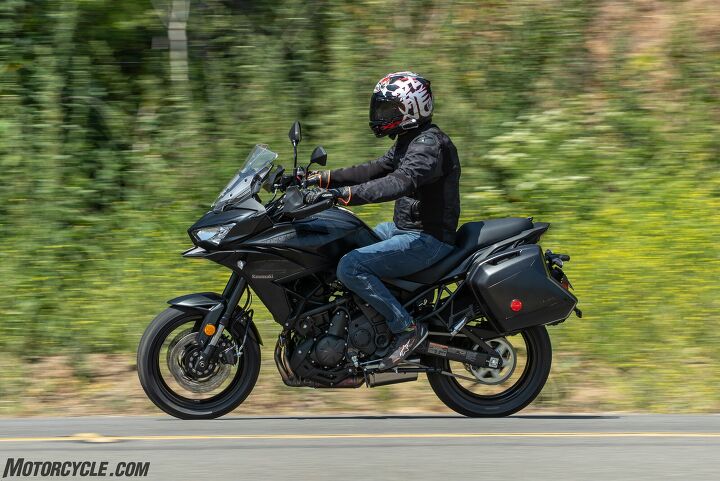Motorsports Racing News & Blog Articles
2022 Kawasaki Versys 650 LT Review – First Ride
A few years ago, I took a break from my lovely MO family and decided to get a real job, complete with an actual commute. Without the pick of the litter to choose from anymore, I had to actually buy a bike to get to work on. The pick? A Kawasaki Versys – anecdotally, the number one motorcycle actually owned by motorcycle journalists (or former ones, in this case). When asked, Brad Puetz (pronounced like the Fight Club actor but not nearly as famous), Kawi’s PR guy, spouted off a series of names of folks in this job who own the VERsatile SYStem.
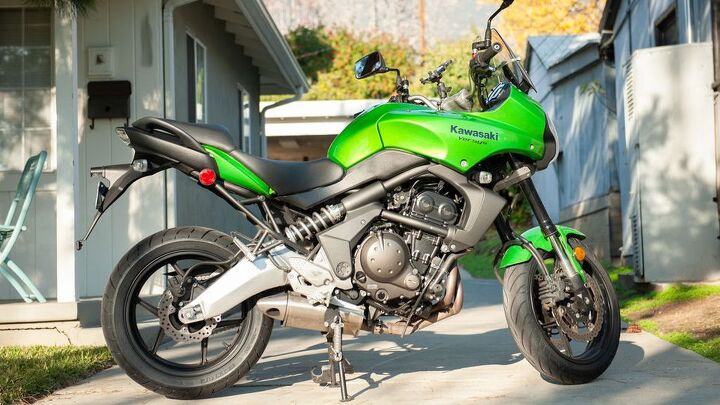
So pragmatic was my first-gen 2009 Versys that this is the only picture I have of it. And I only took this picture so I could use it for my classified listing. I was too busy riding it to take pictures of it.
In fact, the Versys I owned was a former Kawasaki press bike before former MOron Sean Alexander bought it. I then bought it from him and later sold it to fellow MO alum Tom Roderick who only just sold it to a “commoner” outside the industry.
2022 Kawasaki Versys 650 LTEditor Score: 84.5%
| Engine | 18/20 | Suspension | 12/15 | Transmission | 7.5/10 |
| Brakes | 7/10 | Instruments | 4.5/5 | Ergonomics | 9/10 |
| Appearance | 8.5/10 | Desirability | 9/10 | Value | 9/10 |
| + Highs So comfy The TFT display is way better than the analog gauges I used to have Seems comfortable at highway speeds now, unlike my old one that required a gearing change | – Sighs No cruise control No quickshifter You need two hands to adjust the windscreen |
The point of this story is that even though we in the motojourno biz love to drool over (and ride) sexy exotic bikes just like the rest of you, when it comes time to actually own a “daily,” a lot of us gravitate towards pragmatic motorcycles. With the exception of possibly the Honda NC750X, it doesn’t get much more pragmatic than the Kawasaki Versys. And between the two, the Kawi is definitely more fun to ride. Though I’m sure Burnsie begs to differ.
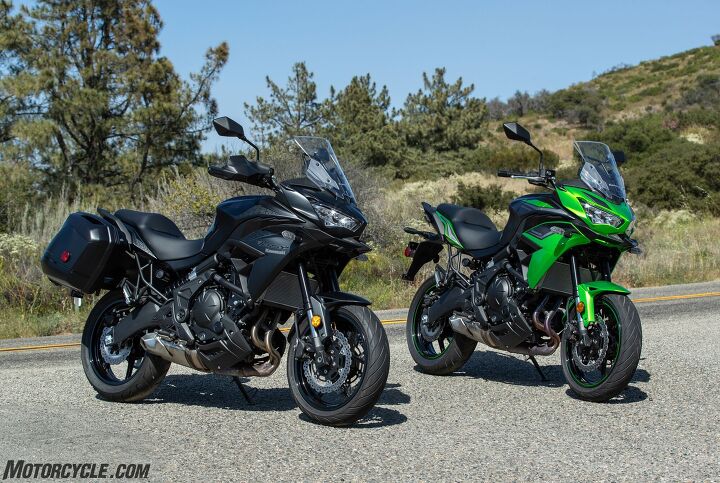
Thirteen years later and the Versys is still around, now with a few updates, but largely the same bike as before. Standard version on the right, LT version (with saddlebags and hand guards) on the left.
As anyone faced with this first-world problem will tell you, it’s hard to improve upon a winning formula. However, the Versys has been around for some time without much of an update to its name. To be honest, does it really need one?
Not really, but that hasn’t stopped Kawasaki from doing it anyway. Introducing the 2022 Versys 650 and Versys 650 LT, which comes in at $9,999, a slight uptick from the standard $8,899 Versys in black. If you want some Kawi green, you’re looking at $9,099. The LT we rode also benefits from luggage and hand guards.
What It Is
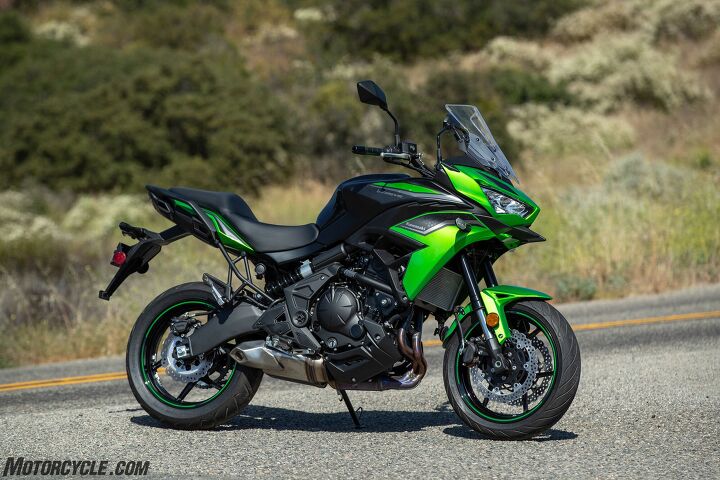
The most obvious visual difference is the new bodywork, putting it in line with the other Versys models.
So, what did Kawasaki improve? In essence, all Kawi did was go after the low-hanging fruit. The biggest being the addition of traction control, adjustable for two levels. It can also be turned off entirely. It’s also not an IMU-based traction control system either, which helps keep costs down. And really, does a Versys really need an IMU? On the safety front, however, Kawasaki has broken with recent tradition and ABS is no longer an option for the Versys – it comes standard.
Speaking of electronics, the new Versys ditches its old analog and LCD gauge display and gets a 4.3-inch TFT piece, putting it in line with other, newer, models in Kawasaki’s lineup. It shows all the usual and relevant information like road speed, engine speed, gear position, fuel level, etc., and you can change the brightness and background color to black or white depending on conditions. If you’re familiar with other Kawis, then the system will feel instantly familiar. Even if you’re not, it’s fairly easy to navigate via buttons on the left bar.
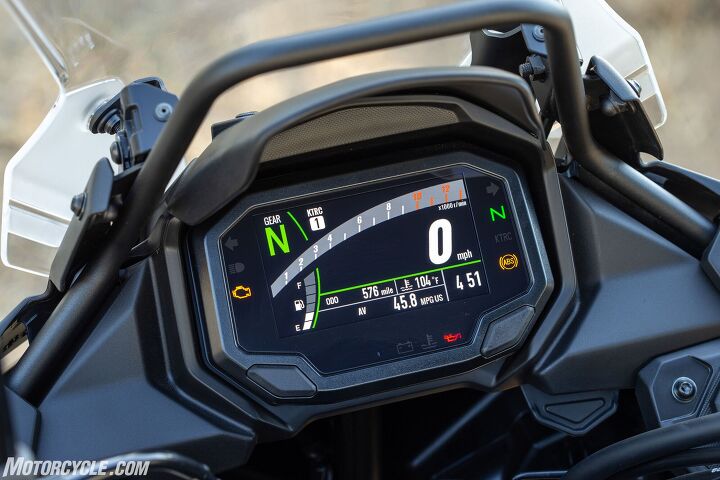
The 4.3-inch TFT display is new on the Versys for ’22 and gives a clearer view of all the vitals. Note also the triangular tab just to the bottom right, beneath the actual unit. Pushing that tab releases the windscreen to move up or down.
Inside the TFT panel is a Bluetooth chip to let you pair the Versys with the Kawasaki Rideology app to see vehicle information, maintenance logs, and ride logs. You can also share information with other app users and rank your stats against your friends. Which has me wondering, do people actually do that?
Anyway, from a visual perspective, the last piece of the Versys to update is the looks. Now it gets some new clothes and a little facelift to bring it in line with the rest of the Versys, and greater Kawasaki, family. The (LED) headlights and nose section look a little sharper, with just a tiny beak below it that Kawi says helps deflect air around the rider. Air heading directly towards the rider gets moved around differently courtesy of an adjustable windscreen. Technically, being able to move the position of the windscreen on a Versys isn’t new, but the new bike has the screen placed on a rail system that can slide up and down with one hand as long as you press a button to release the lock mechanism.
What It Isn’t
With the new features laid out, it’s time to revisit what hasn’t changed with the Versys 650 – namely, all the important bits that made the Versys a Versys. The 649cc parallel-Twin is back and unchanged, and it sits inside the steel frame it’s been mated with for years now. The beauty of this engine is its real-world power, so we’re thankful Kawasaki didn’t try to reinvent the wheel here.
The supporting cast, literally, should be familiar to Versys fans, too. A 41mm inverted fork separates suspension duties between both fork legs, while the semi-horizontal shock is mounted directly from swingarm to frame for direct feedback. You can adjust rebound and preload both front and rear. Luckily, the latter can be adjusted with an easy-access knob.
Brakes stay the same as before (apart from ABS), with dual 300mm petal-shape discs and two-piston Nissin calipers up front paired with a 250mm petal disc in the back. Rubber lines and a traditional master cylinder also return.
Still The Same Friendly Bike
Let’s face it. Not much is different with the new Versys, so what can you really expect as far as riding dynamics go? The answer, of course, is not much – and that’s just the way it should be. Granted, it’s been a long while since I last rode my first-generation Versys, but I immediately felt at home on the new one. Actually, I actually felt better on the new one, mostly because the seat felt plusher, more comfortable than before. This isn’t just perception, either. The seat really does have different densities of foam to keep your butt comfortable for the long haul.
Otherwise, the Versys is the same loveable do-it-all bike it’s always been. Kawasaki’s test route from its HQ in Foothill Ranch, California to the hillsides in and around Fallbrook, via more twisty roads straddling the north San Diego border, incorporated a nice mix of freeway riding and twisties because, as Kawi surveys have shown, most Versys (Versi?) spend their time going in straight lines on the freeway with an occasional fun ride thrown in on weekends. What was immediate with the straight-line freeway stint was how cohesive the Versys is as a sum of its parts. Despite the freeway slog, that cushy seat never had me squirming about or standing up looking for a more comfortable position.
Power-wise, the 650 Twin lands in the Goldilocks zone of having just the right amount of power to satisfy without going overboard. The cable throttle gives you a direct connection to the throttle bodies and in a way, it’s reassuring to know what I’m doing with my hand is going, unfiltered, to the engine. Cruising down the freeway at 80 mph, the engine is settled at a comfortable rhythm at about 6,000 rpm. If memory serves correctly, my own Versys was 500 revs higher. It may not sound like much, but my old bike seemed frantic at freeway speeds. I actually bought a smaller rear sprocket, which calmed down the engine and brought the revs down to about 6,000. Then the bike was much smoother on the highway. The net result is basically the same as what the new bike gives you right off the bat.
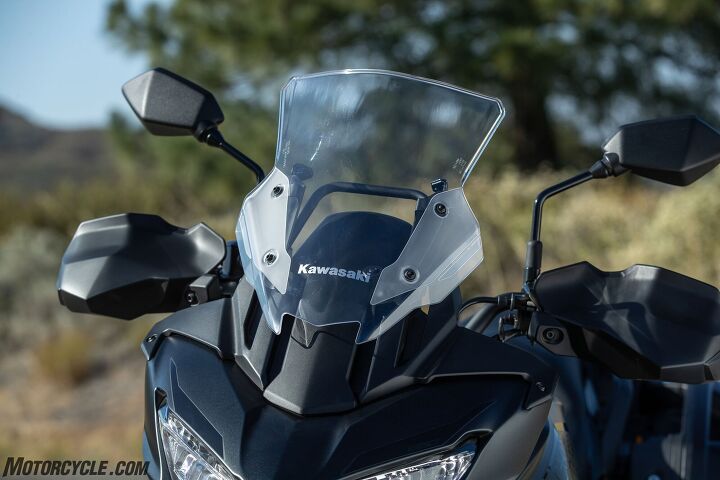
At its highest setting, you can see the windscreen’s railing underneath and get an idea how much lower it will go.
Right, so all is good on the engine and gearing front. Except the freeway jaunt reveals a pretty big oversight on the new Versys: Cruise Control. Or, more to the point, the lack of it. Yes, cable throttles make it more of a challenge to incorporate cruise control, but for what the Versys is made to do, it’s a glaring omission. The people in Team Green shirts might argue cruise control would make the price go up. Even so, a modest price bump would be a worthy price to pay.
With that gripe out of the way, have I mentioned how comfortable the bike is? You already know about the seat, but even the overall ride is nice and plush without seeming overly so. The seating position is nice and neutral, with the bars not too high or too low, and the pegs directly underneath me. Straddling the 5.5-gallon fuel tank doesn’t feel awkward at all, as the tank narrows to a comfortable shape where it meets the rider. The suspenders veer towards the soft side to absorb the bumps and jolts the average highway throws your way, but even the pocket the rider sits in feels comfy and stress-free.
Credit for that has to go to the new bodywork and windscreen diverting much of the air around the rider. Because it was a warm day, I had the windscreen at its lowest setting. As such, a significant amount of air flew straight to the vents in my Arai and cooled my head. Lovely. What’s slightly annoying, though, is having to use two hands to adjust the screen – one hand to press the lever, the other to move the screen up or down. It’s not a deal-breaker, but if the bike had cruise control you could complete the task without losing any speed.
If you know the Versys at all, by now you really shouldn’t be surprised that it’s an overall competent motorcycle for daily riding. But as we veered off the freeway and ran into the hills, the Versys’ other side came out to play. ZX-10 levels of braking are not going to be found here, but the setup, though a bit pedestrian, slows the bike just fine (I’ve found changing pads goes a long way). You do need to get used to the suspension going through its seemingly long travel, but those who ride at a more gingerly pace may not even notice or care. Those handlebars give you lots of leverage to move the bike from side to side, and if you really push it, you again start to feel the long suspension going through its motions. The Dunlop Sportmax D222 tires come up to temp quickly, giving impressive stability on the side of the tire. You’re not going to mistake these for slicks, but they are fine for what they are.
Playing in the twisties reveals the other Versys oversight – the lack of a quickshifter. An autoblipper would be better, but even having the ability to pop upshifts without the clutch or breathing off the throttle would go a long way towards upping the bike’s profile. It’s not as crucial a feature as cruise control, but it’s a close second in my opinion.
And what about the traction control and TFT screen, you ask? Well, with the perfect riding conditions we had, a loss of traction was never a concern. So, unfortunately, an adequate review of that system will have to wait. Though, we have to imagine it will do an excellent job at preventing unwanted wheelspin. As for the TFT, well, it’s great. Clear and easy to read, even in direct sunlight. It’s hard going back to analog after this.
I’d Buy Another
It might sound like I’m beating the Versys up with my criticisms. I’m not. Quite the contrary. The Versys has been such a competent, fun, and pragmatic bike for so long, the time has come for some constructive criticism. It’s just a shame it had to happen to Kawasaki’s revised version of the bike. All of the loveable traits the bike has always had haven’t gone anywhere, and in fact, if I were on the market for another daily rider to be my do-it-all street bike, I’d still have the Versys near the top of my list.
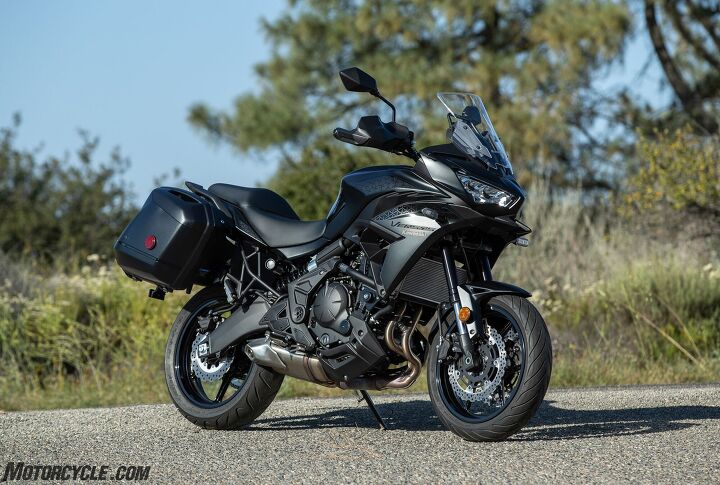
I don’t miss my old bike, but riding the new one reminded me that I made the right choice when I was looking for a daily commuter.
Actually, I’d have the Versys 650 LT near the top, mainly for the 28-liter saddlebags. Those are really convenient and use the same key as the ignition on the LT. If saddlebags aren’t your thing, a top case can also be found in Kawi’s accessories catalog, along with heated grips, GPS mount, frame sliders, USB socket, DC power outlet, a large touring windscreen, and more. Regardless of which Versys suits your preferences, rest assured it hasn’t lost any of its charm. We just wish it came with a little bit more.
|
In Gear
|
| 2022 Kawasaki Versys 650 Specifications | |
|---|---|
| Engine Type |
4-Stroke, Liquid-Cooled, 4 Valve Cylinder Head, Parallel Twin |
| Displacement | 649cc |
| Bore and Stroke | 83.0 x 60.0 mm |
| Compression ratio | 10.8:1 |
| Valve system | DOHC |
| Fuel system | DFI with 38mm Keihin throttle bodies |
| Horsepower | NA |
| Maximum torque | 44.8 lb-ft. at 7,000 rpm (claimed) |
| Transmission | 6-speed |
| Final drive | Chain |
| Clutch | Wet multi-disc |
| Frame | Steel |
| Front suspension |
41mm Hydraulic Telescopic Fork with Stepless Adjustable Rebound Damping (right side)and Adjustable Preload |
| Front wheel travel | 5.9 inches |
| Rear suspension |
Offset Laydown Single Shock with Adjustable Rebound Damping and remote Adjustable Preload |
| Rear wheel travel | 5.7 inches |
| Front tire | 120/70 ZR17 Dunlop D222 |
| Rear tire | 160/60 ZR17 Dunlop D222 |
| Front brakes |
Dual 300mm Petal Disc with 2-Piston Caliper, ABS |
| Rear brakes |
Single 220mm Petal Disc, ABS |
| Caster (rake) | 25.0° |
| Trail | 4.3 inches |
| Steering angle (left/right) | NA |
| Overall length | 85.2 inches |
| Overall width | 33.1 inches |
| Overall height | 53.5/55.9 inches (windshield down/up) |
| Wheelbase | 55.7 inches |
| Ground clearance | 6.7 inches |
| Seat height | 33.3 inches |
| Curb weight | 482.9 pounds (+20 w/LT saddlebags and hand guards) |
| Fuel capacity | 5.5 gallons |
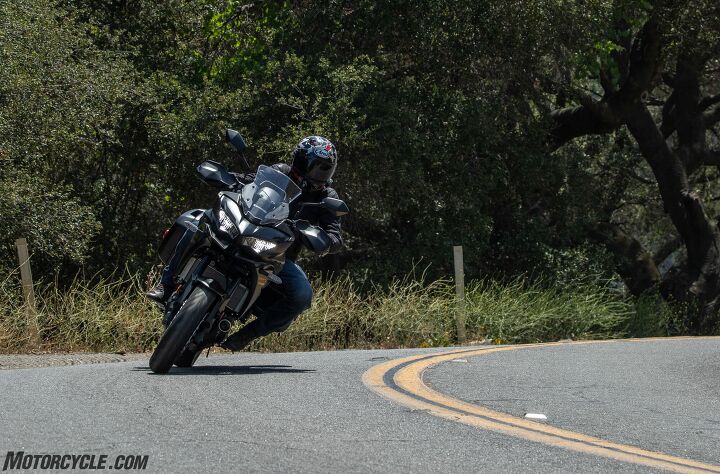
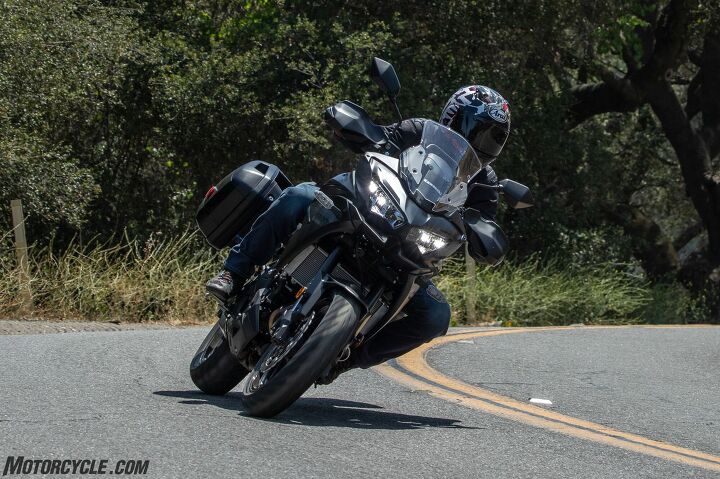
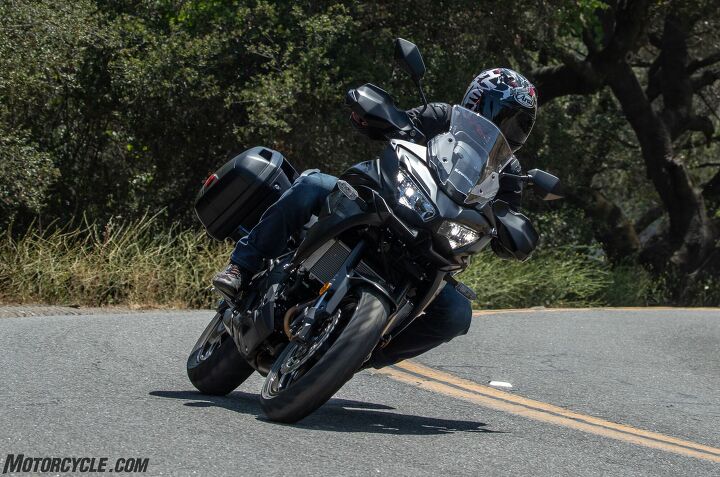
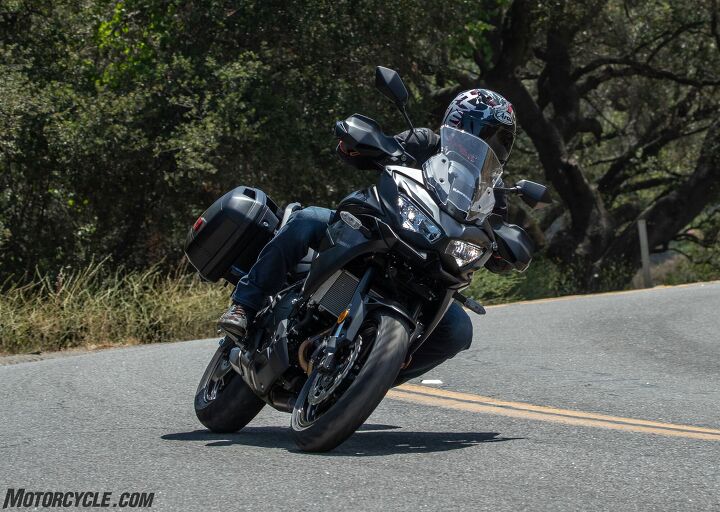
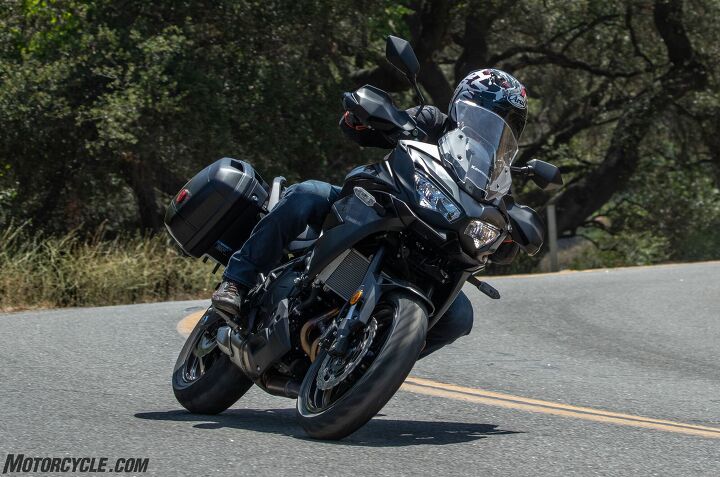
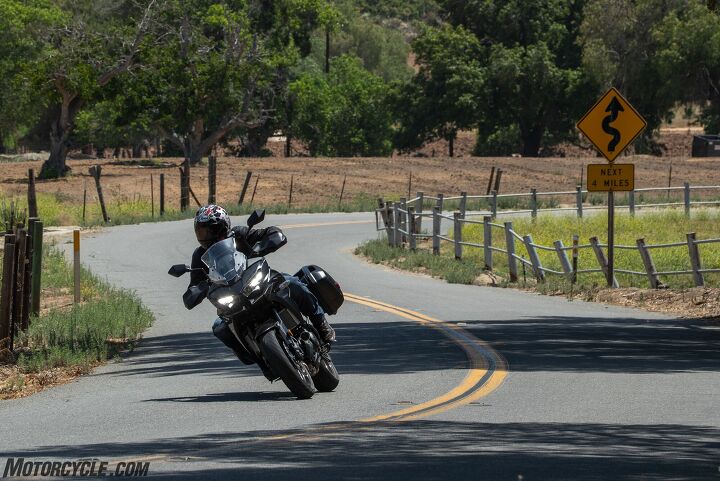
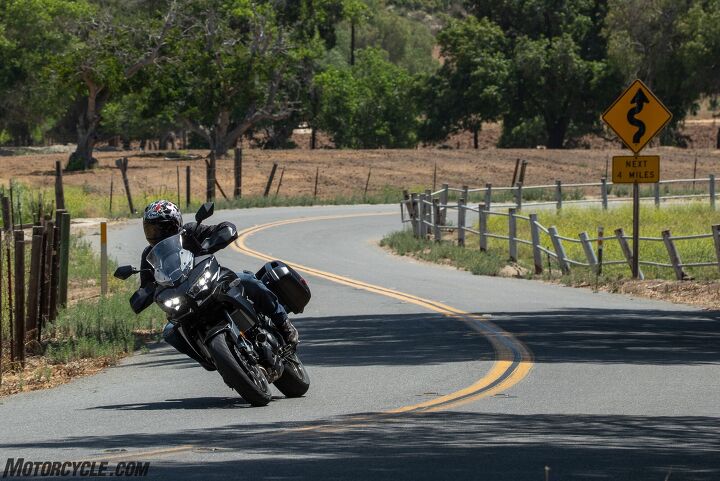
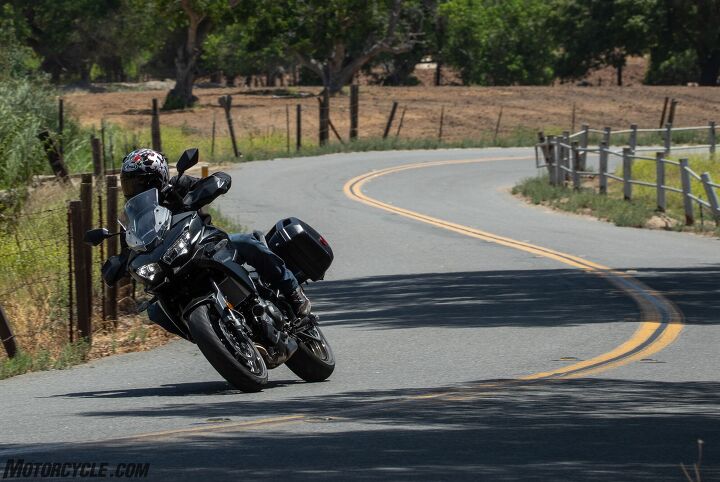
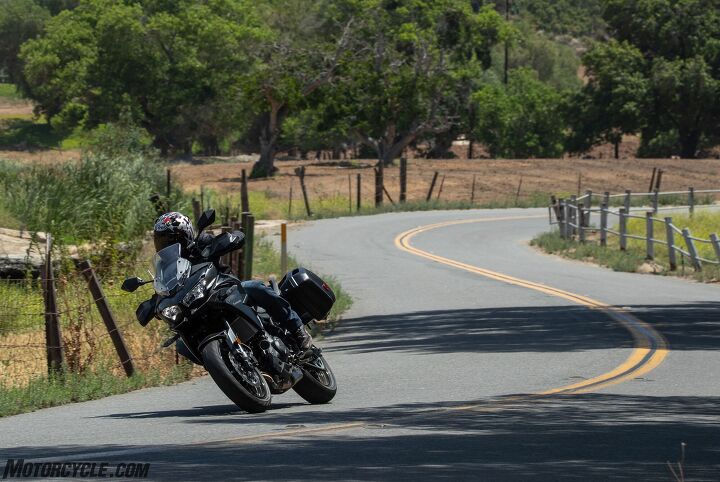
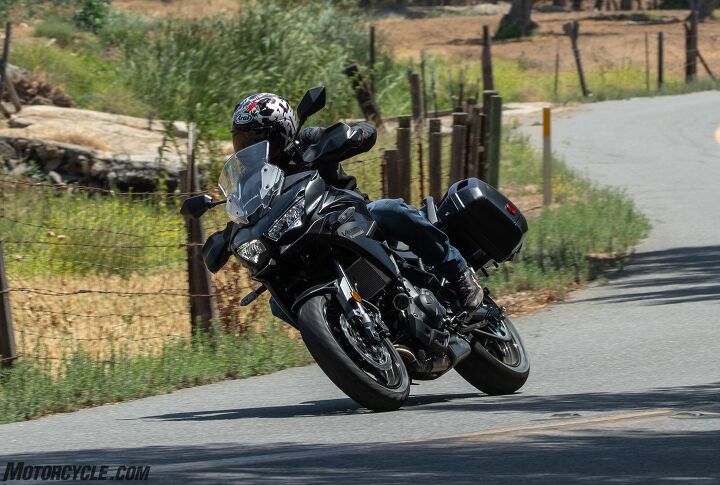
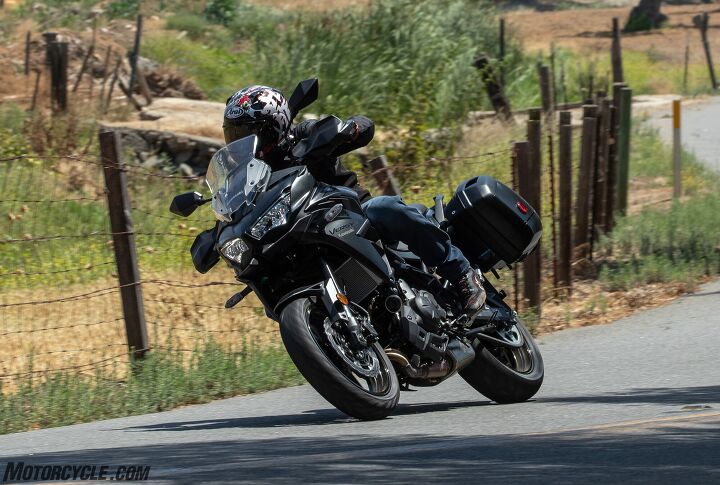
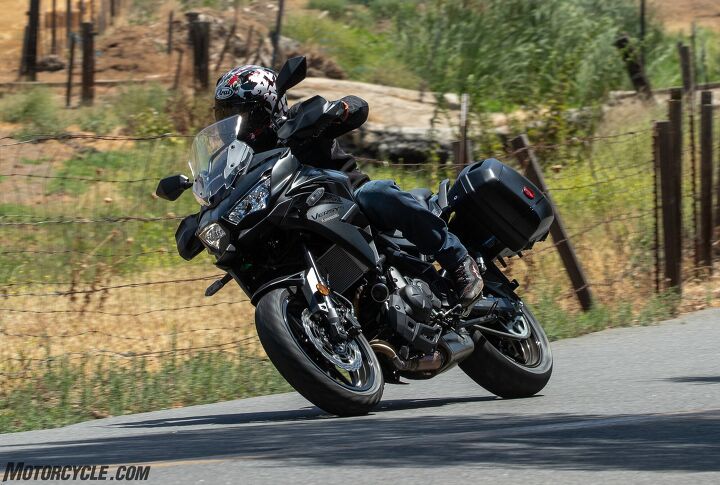
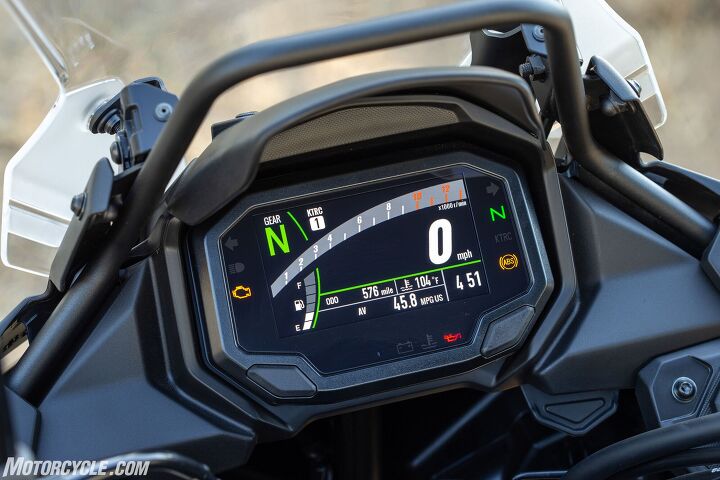
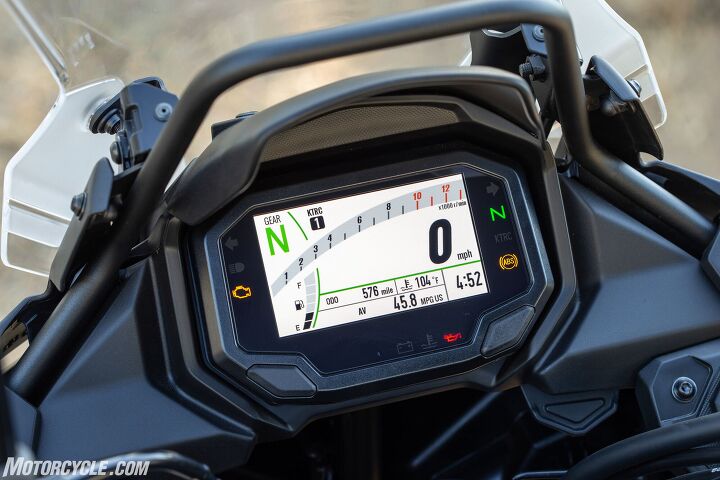
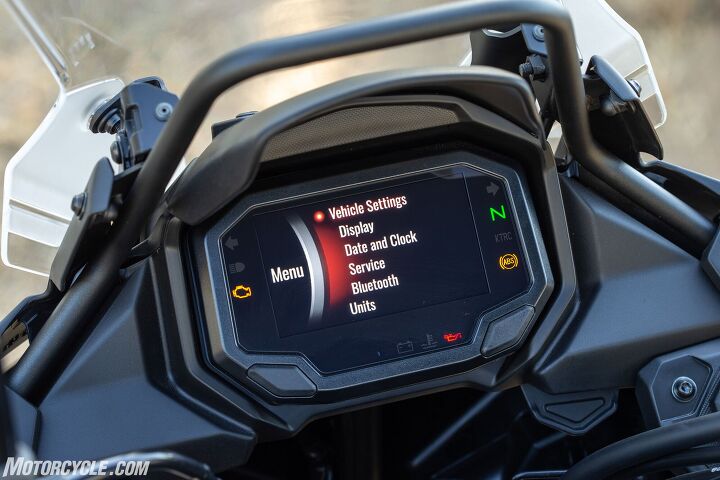
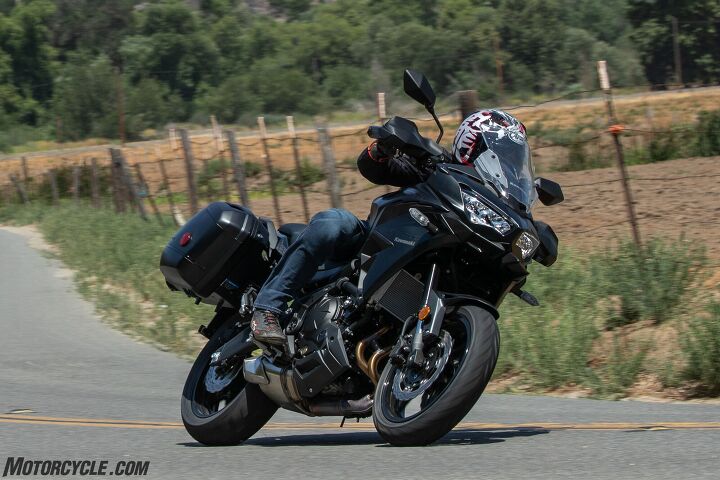
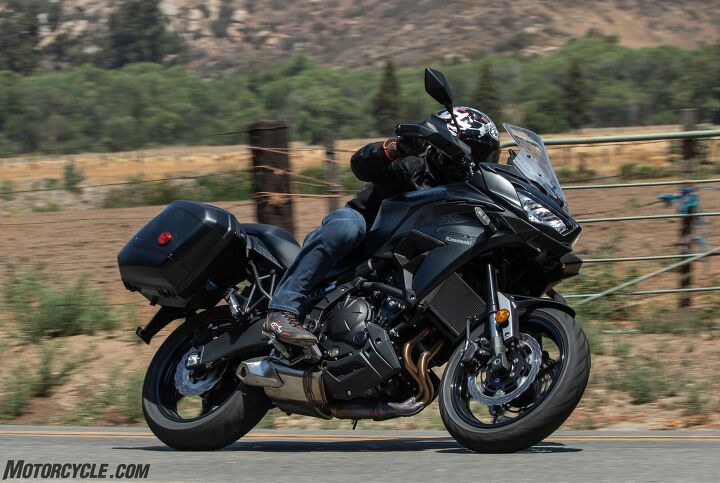
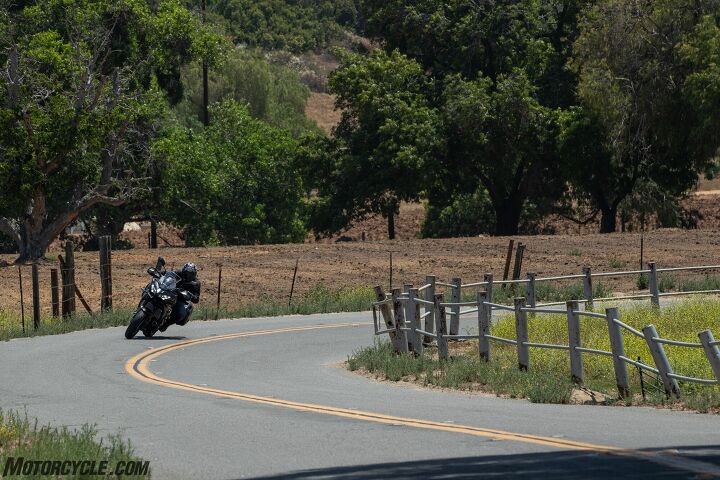
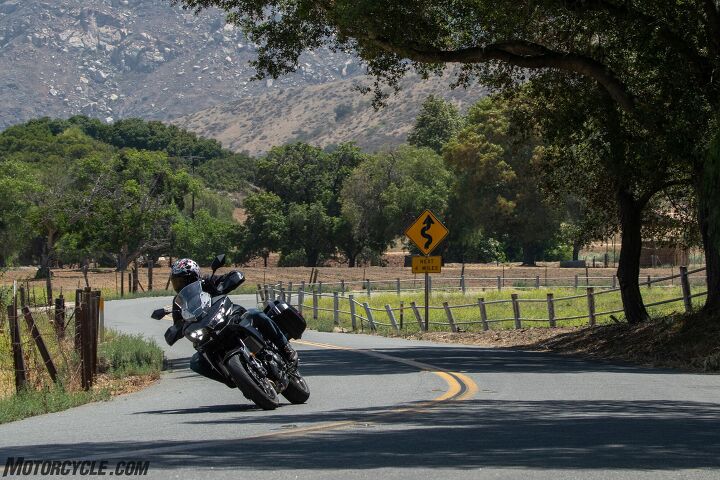
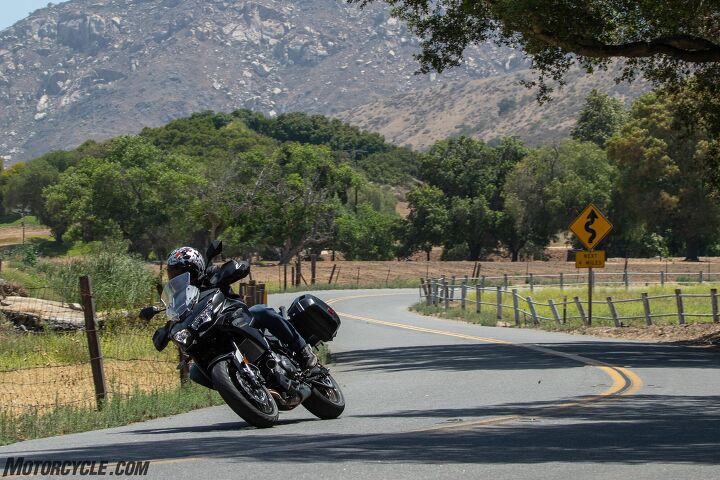
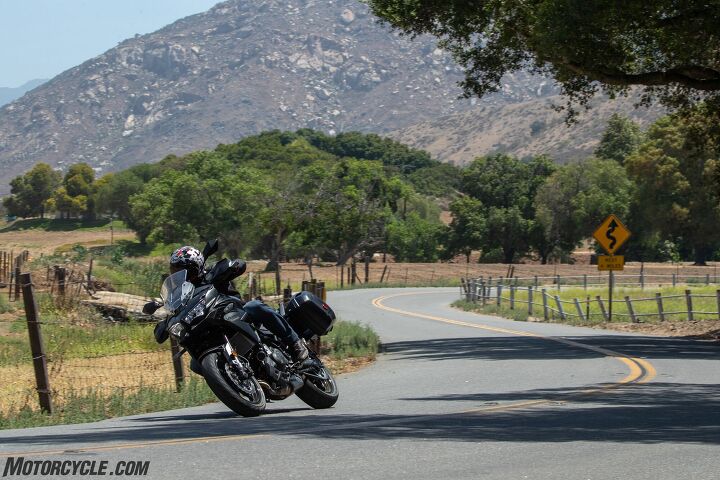
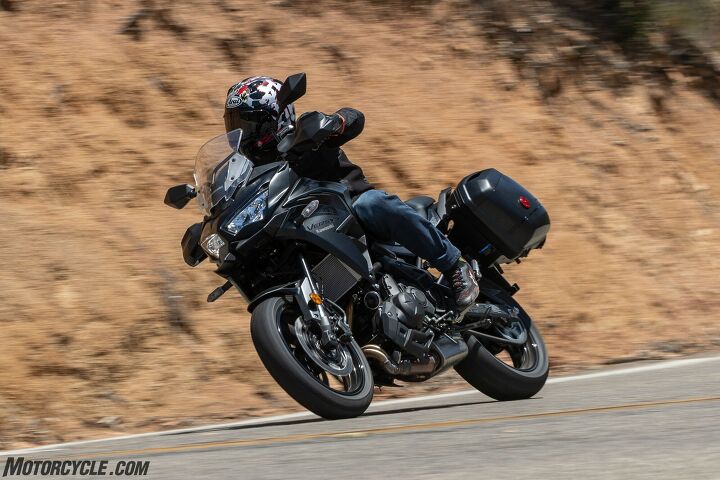
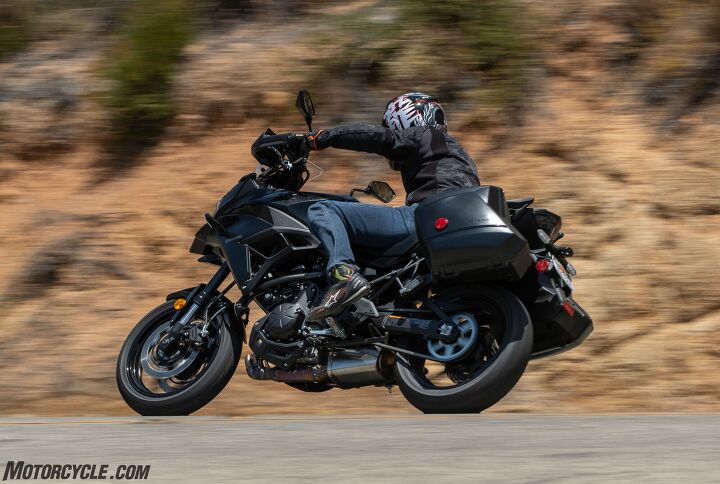
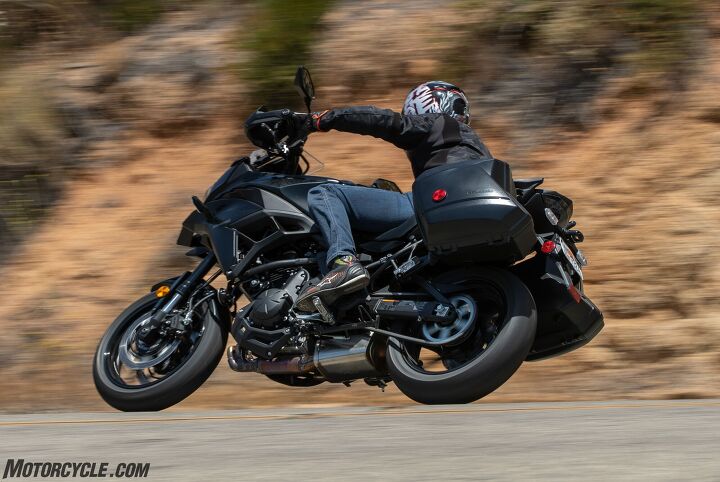
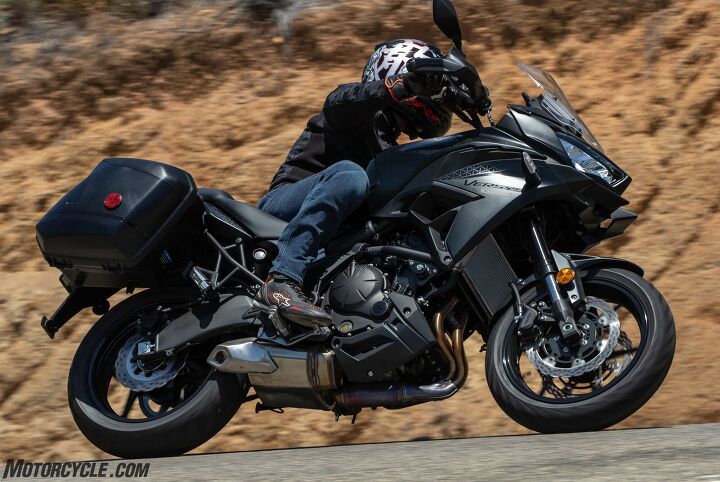
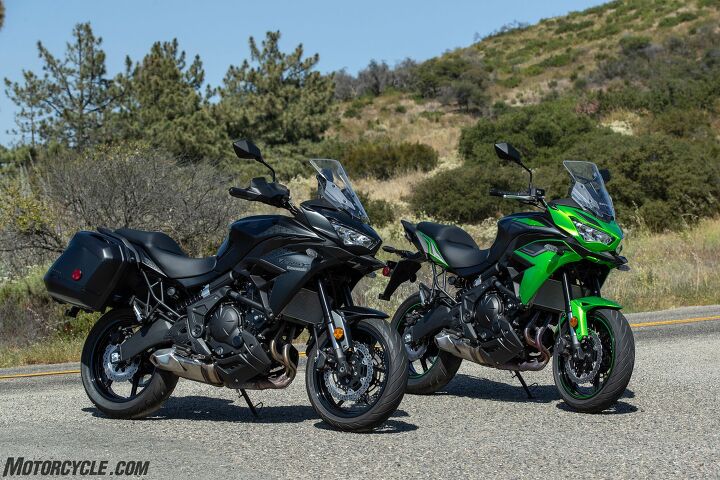
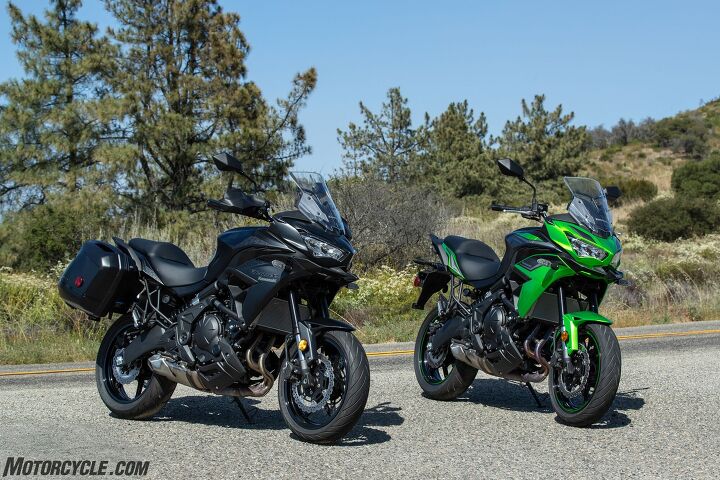
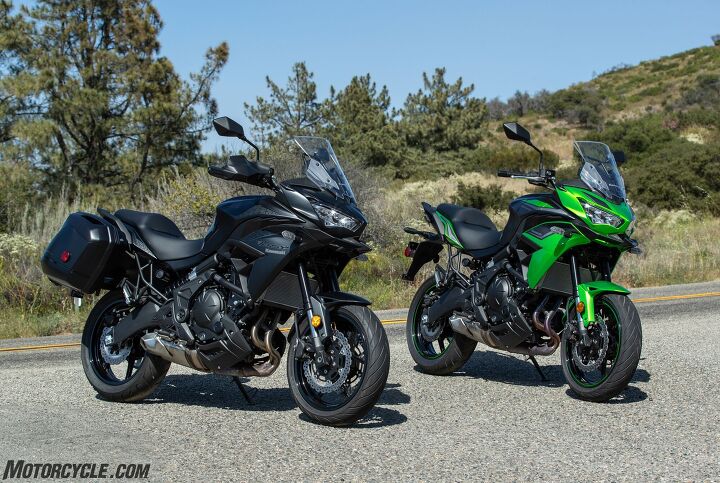
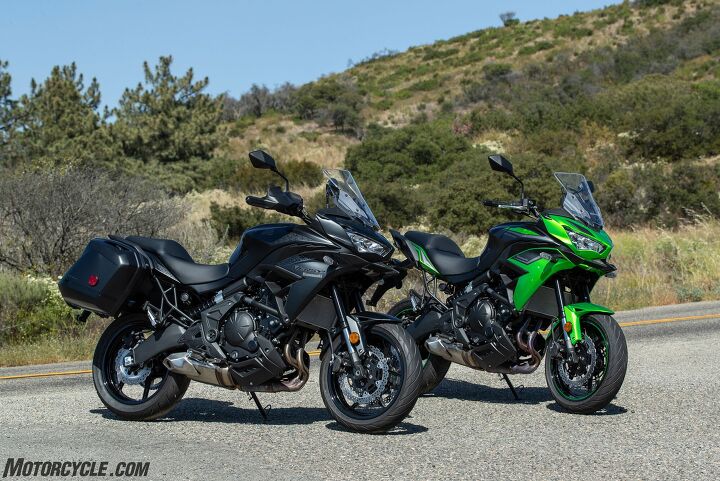
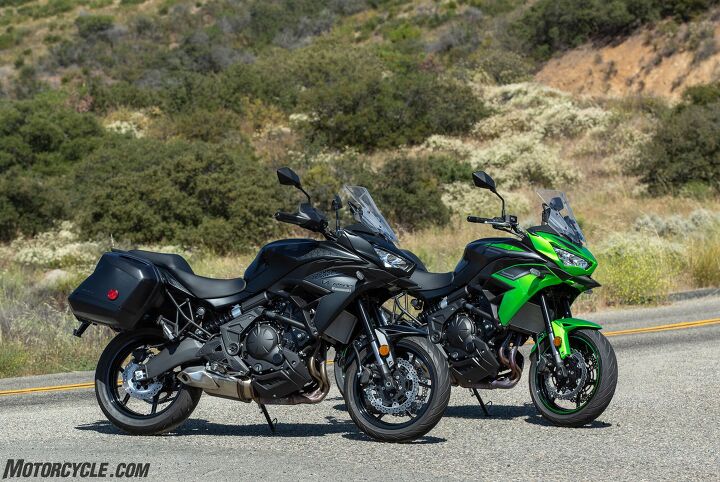
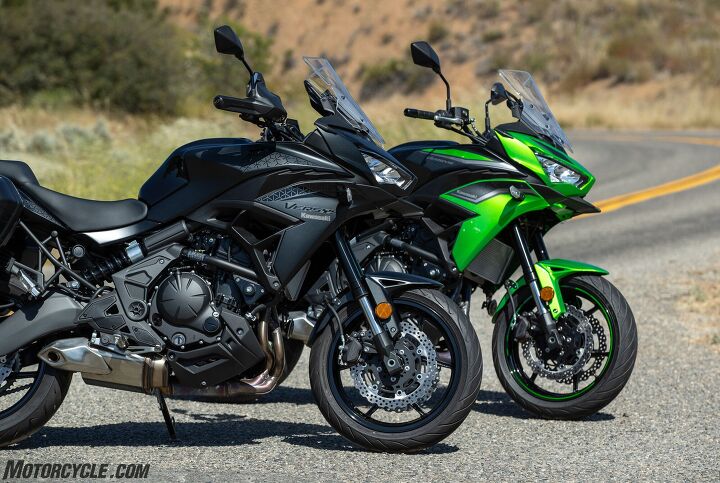
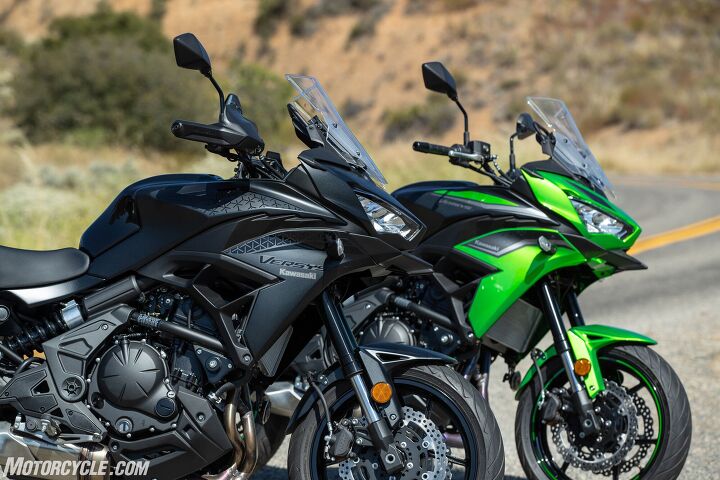
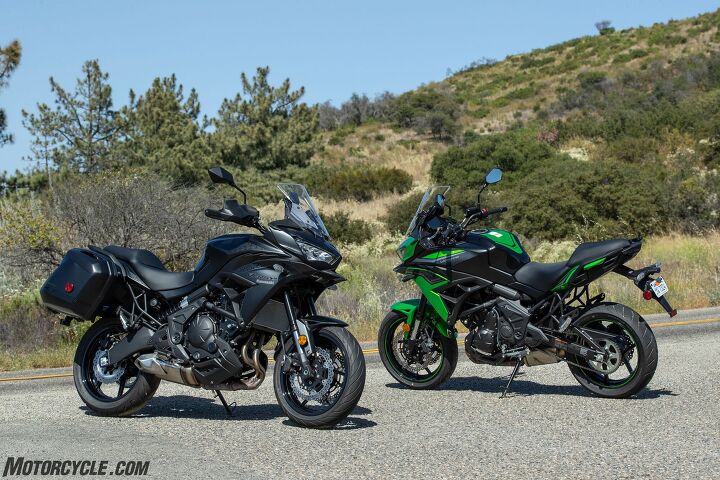
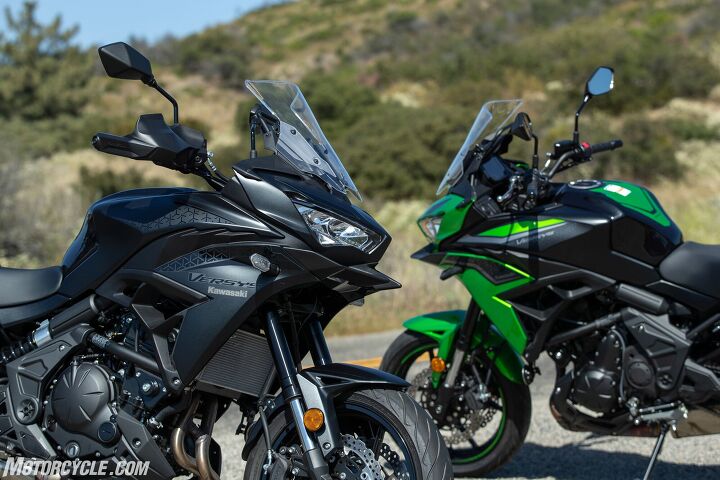
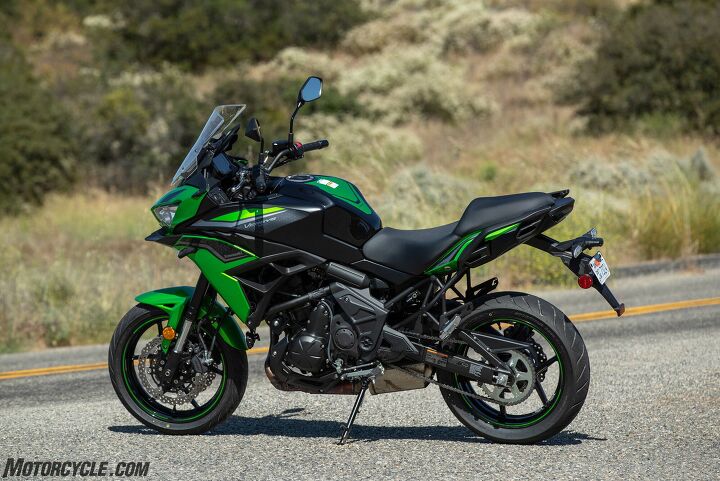
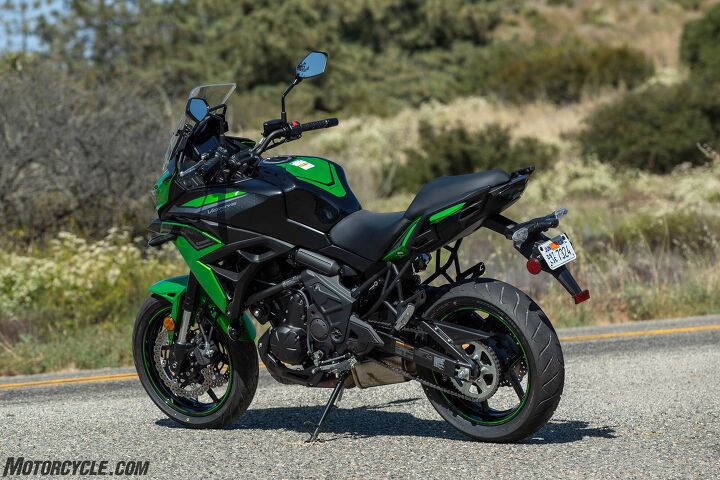
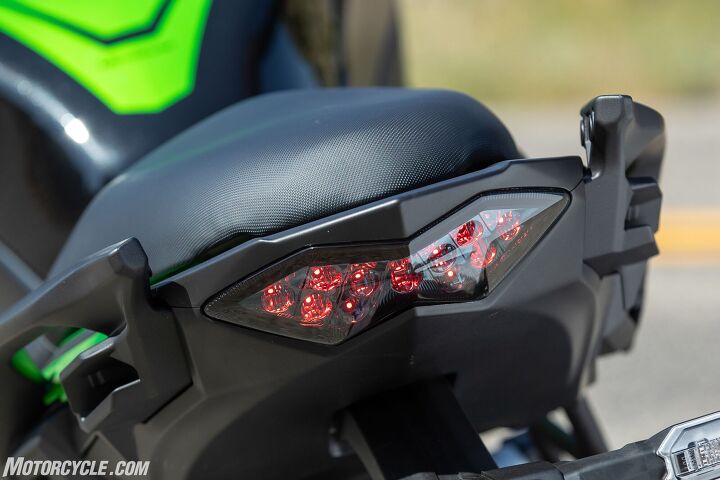
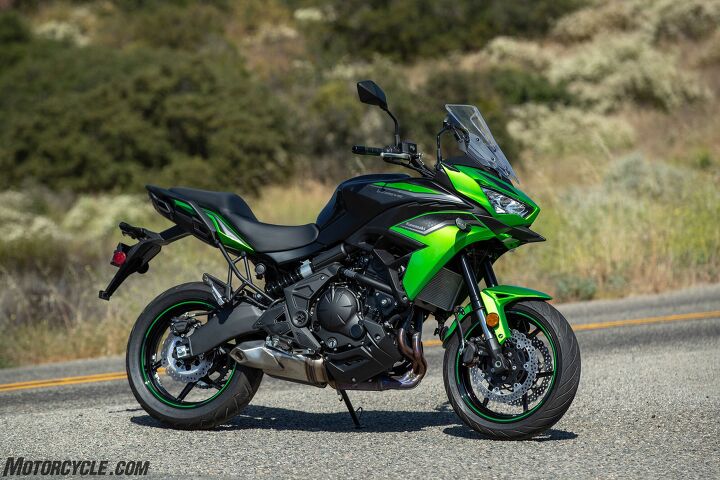
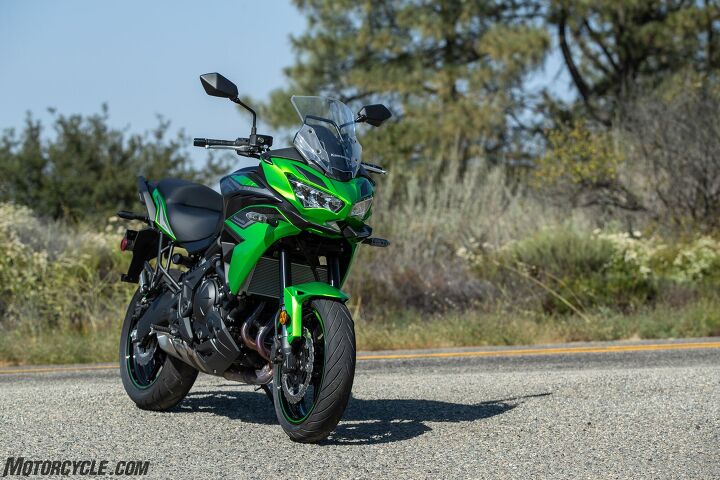
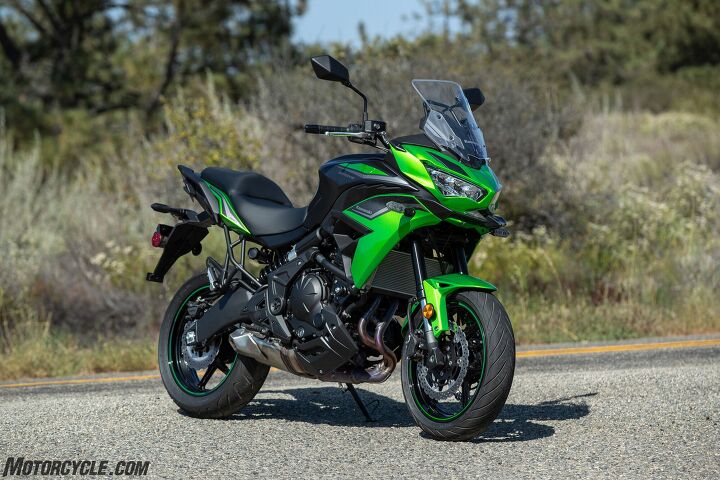
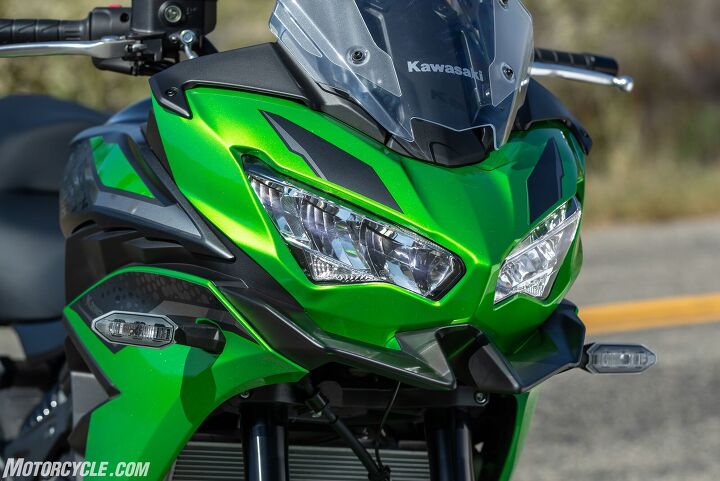
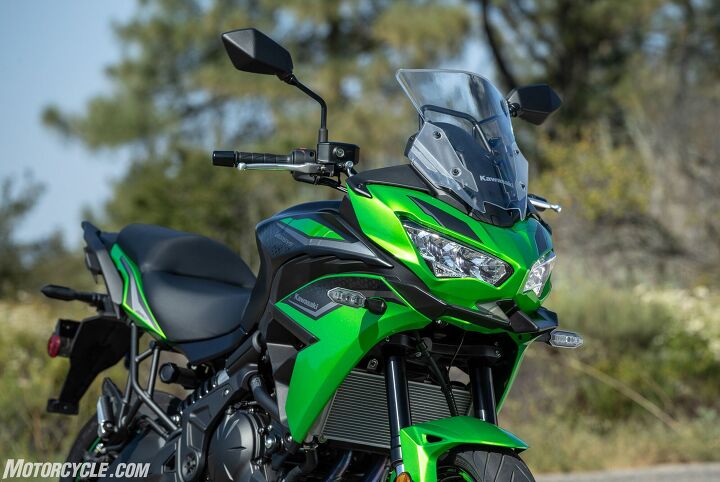

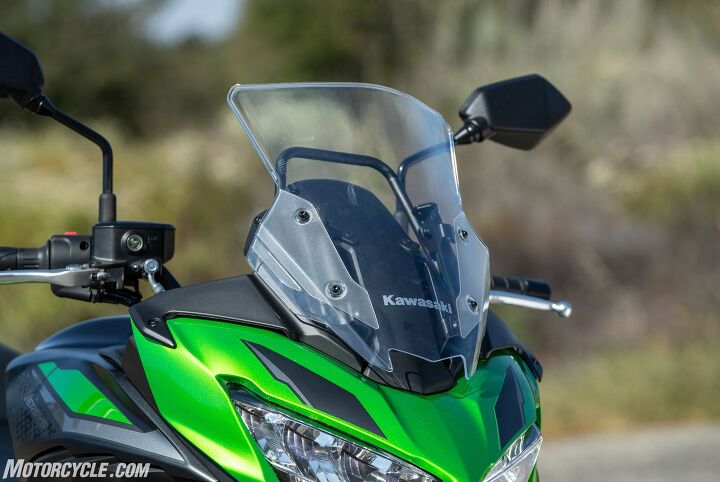
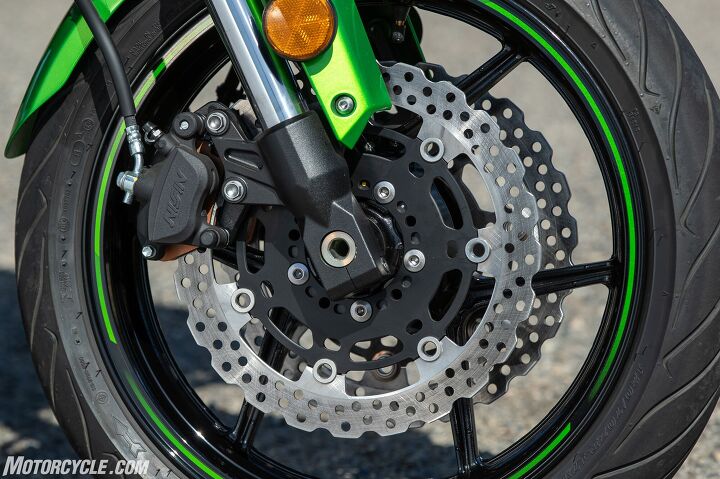
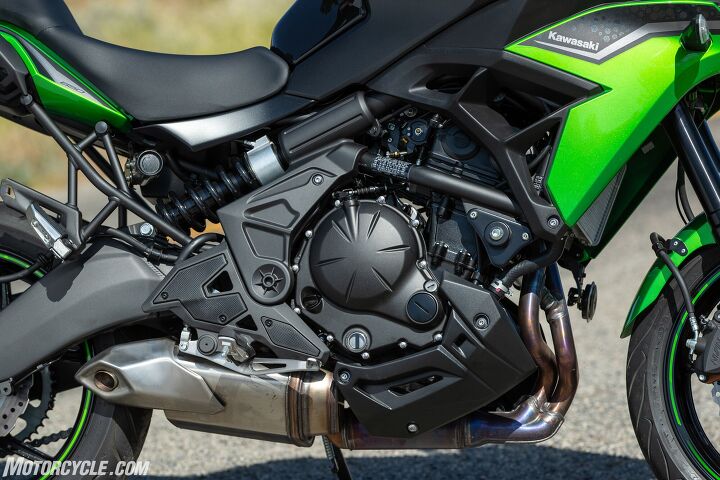
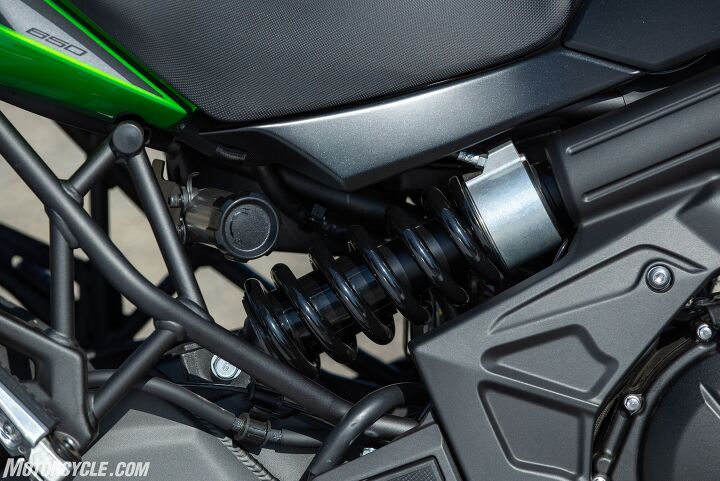
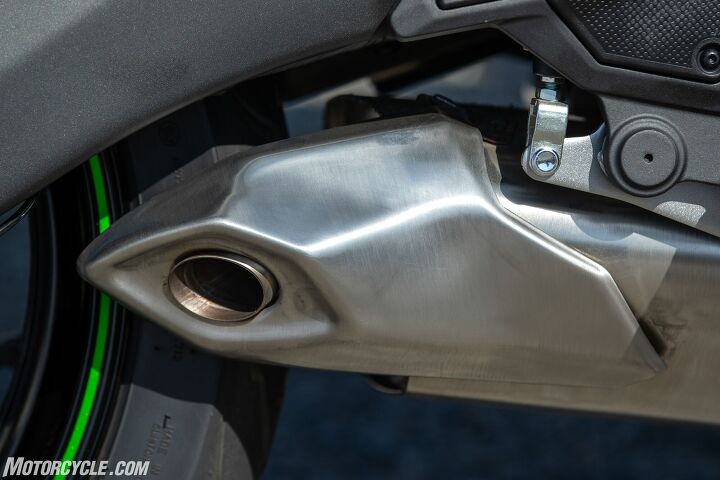
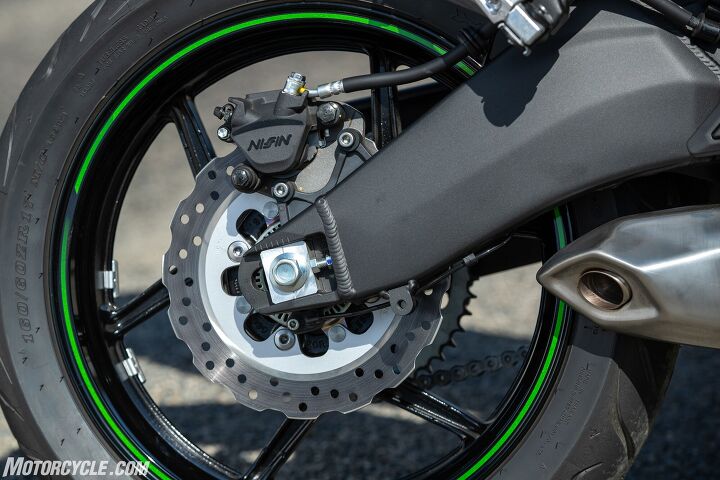
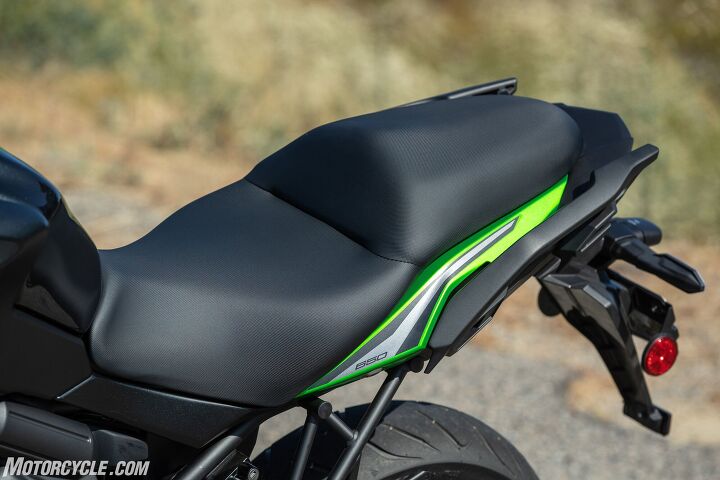
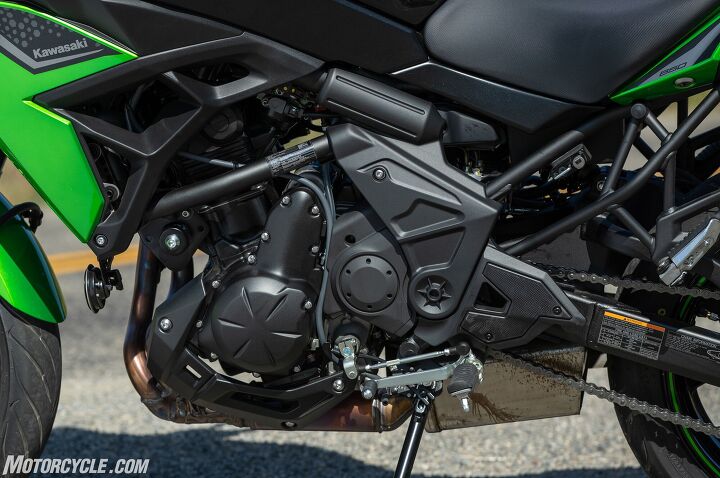
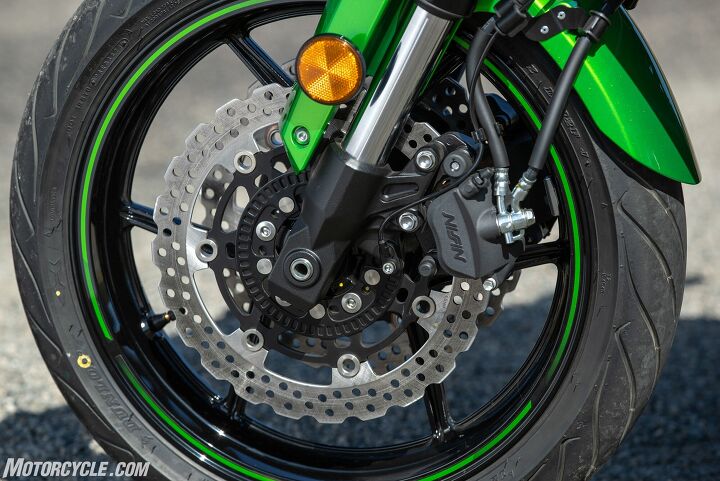
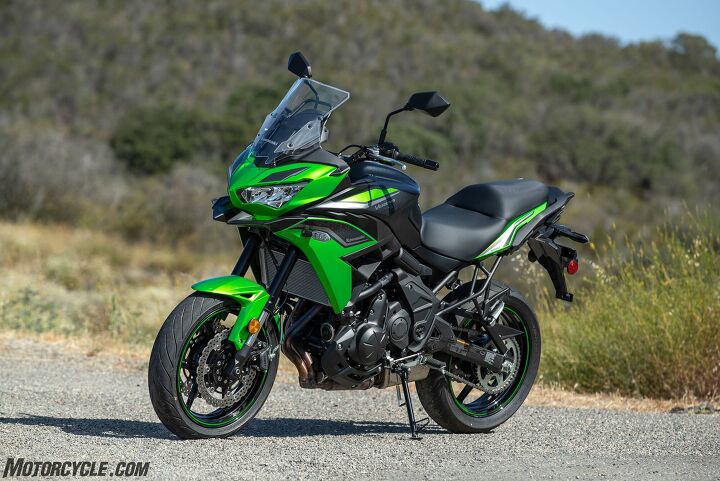
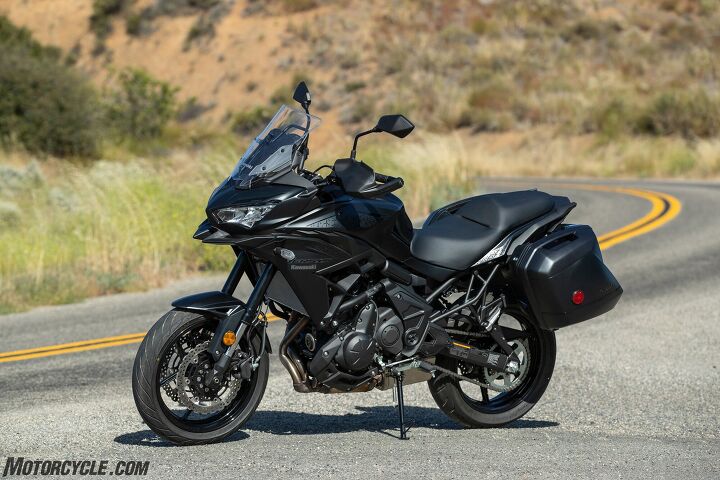
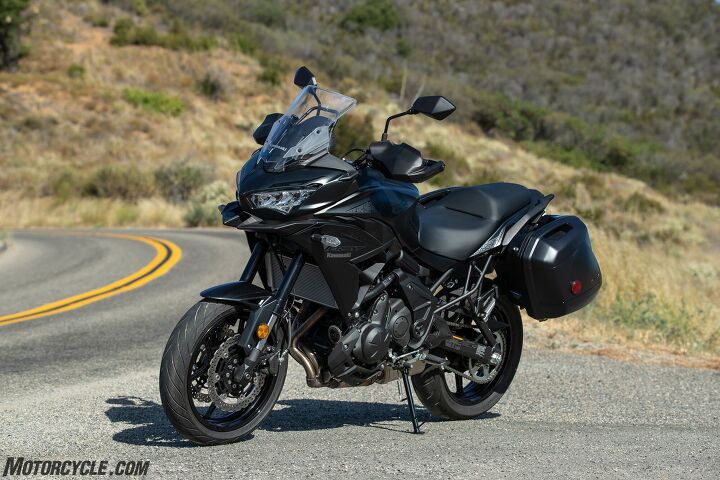
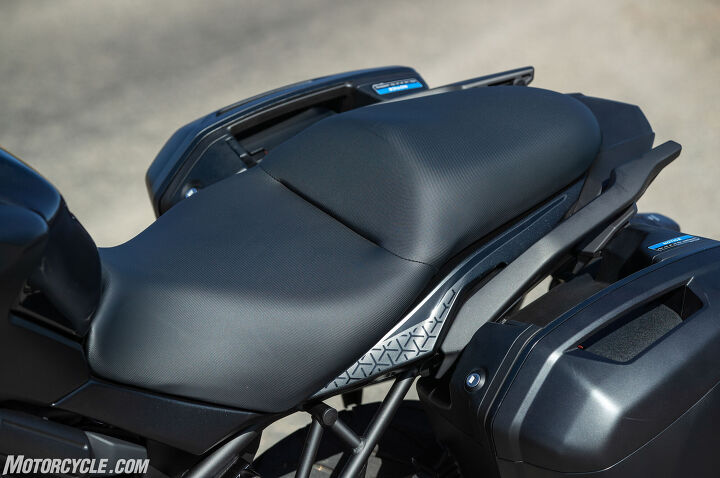
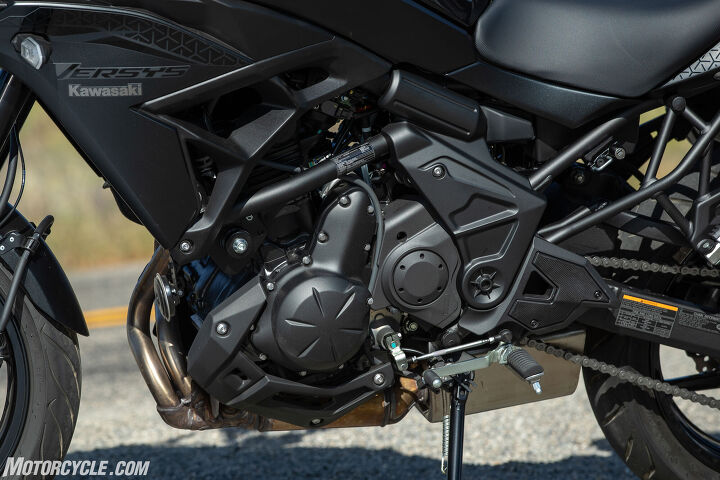
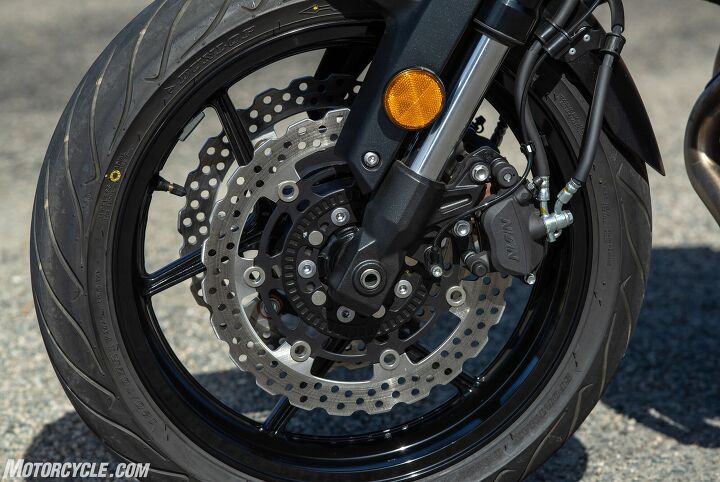
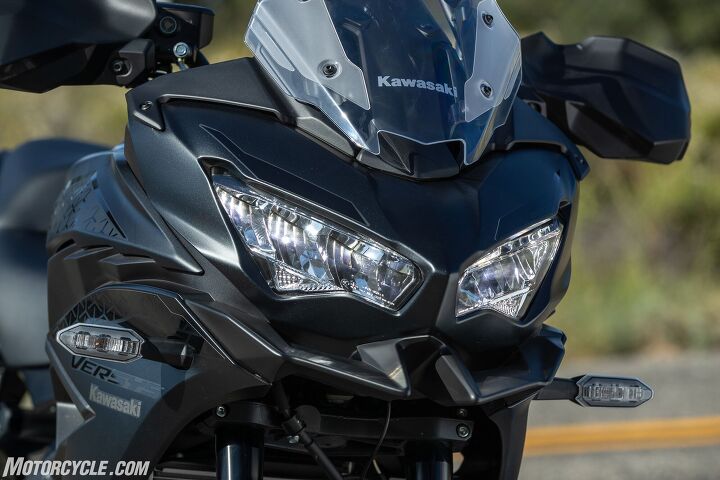
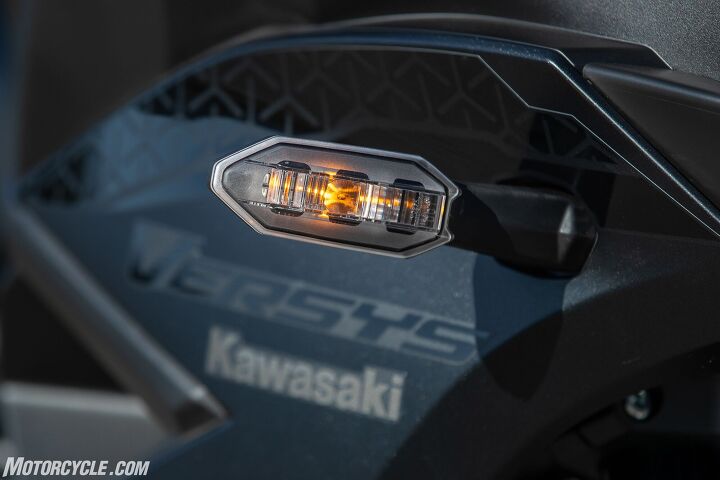
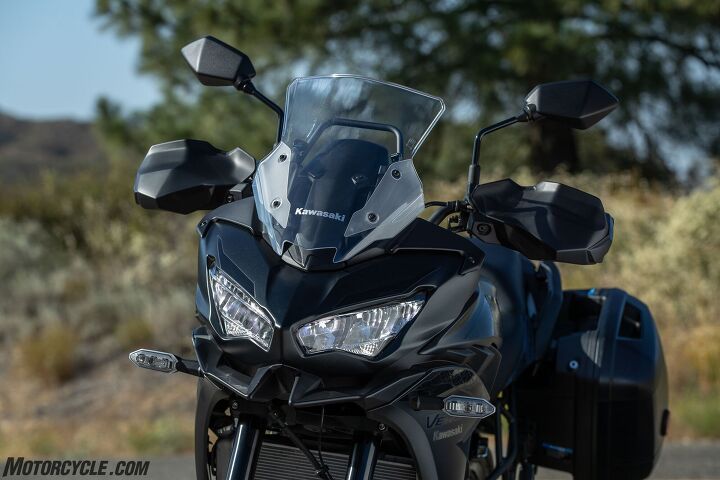
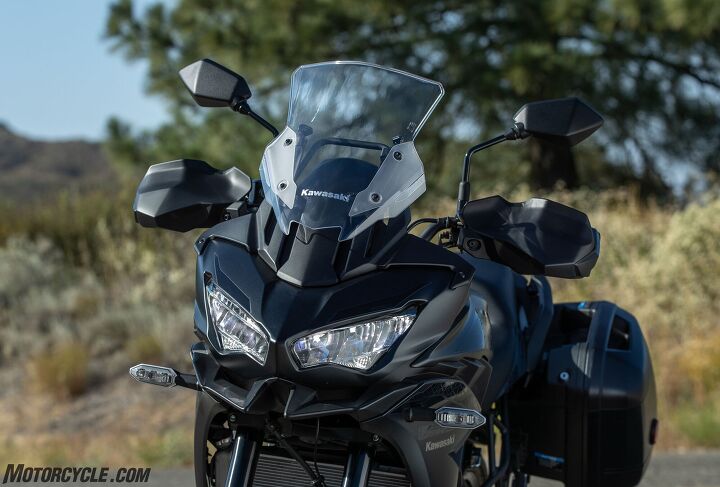
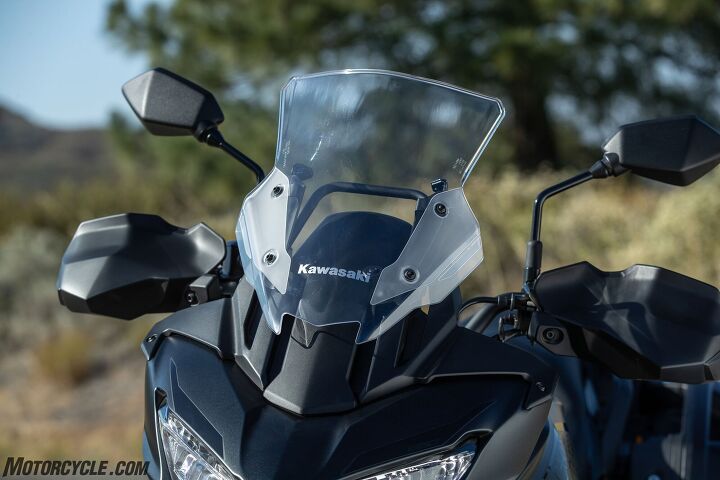
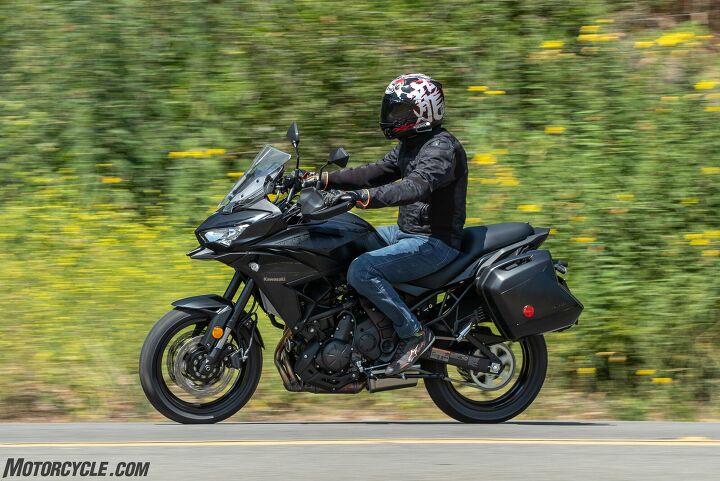
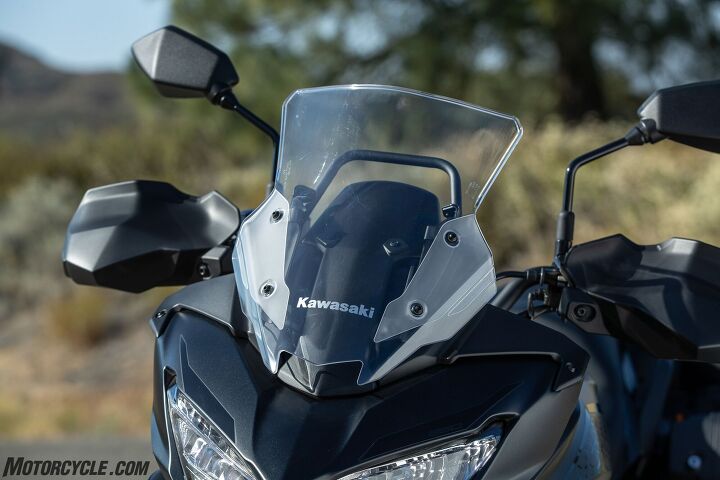
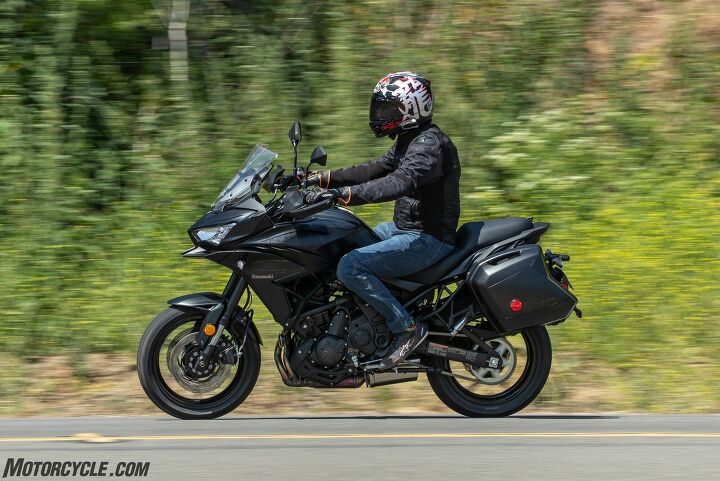
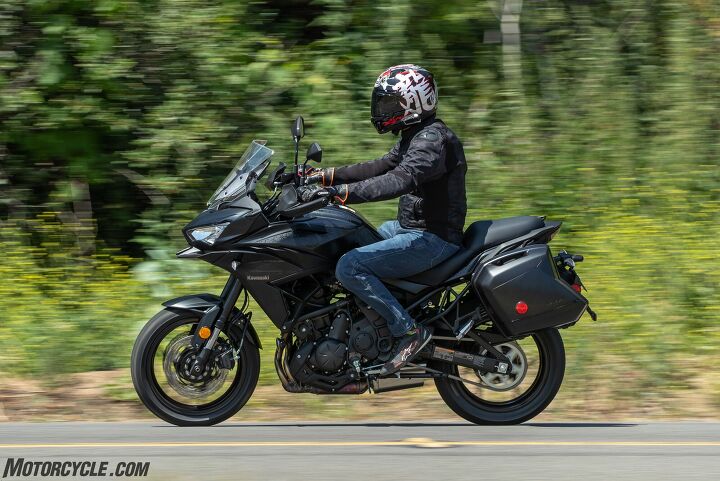
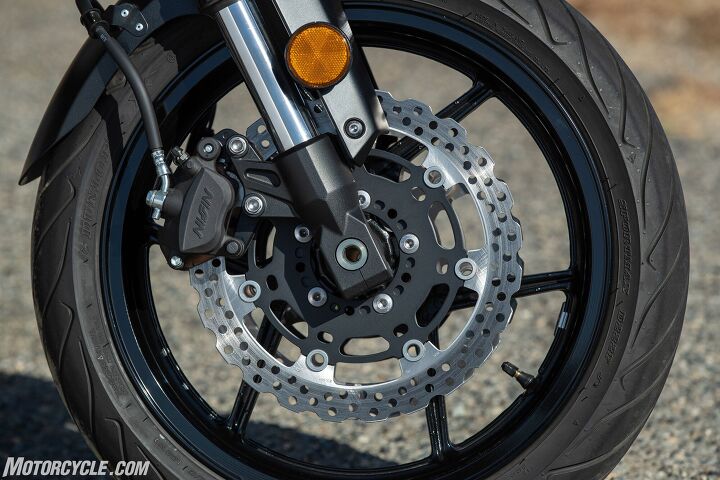
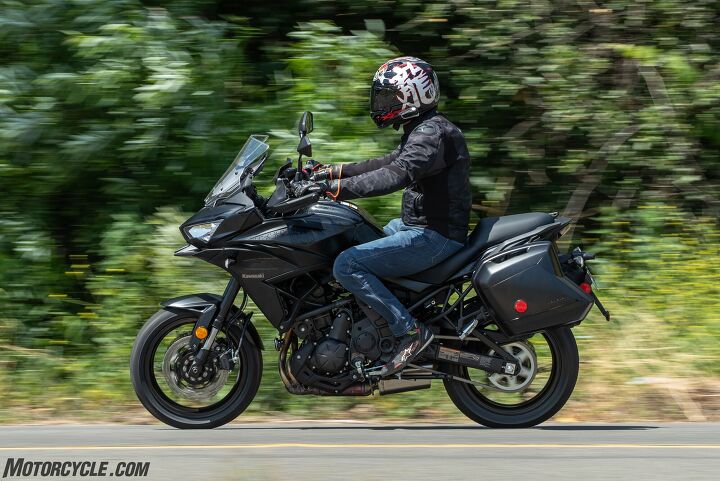
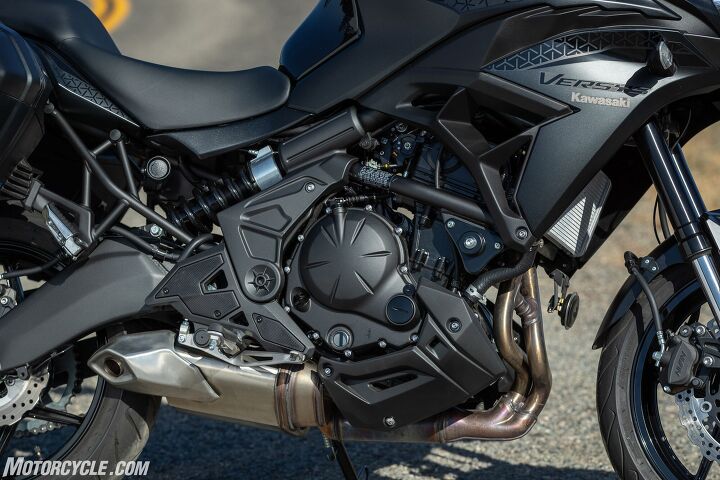
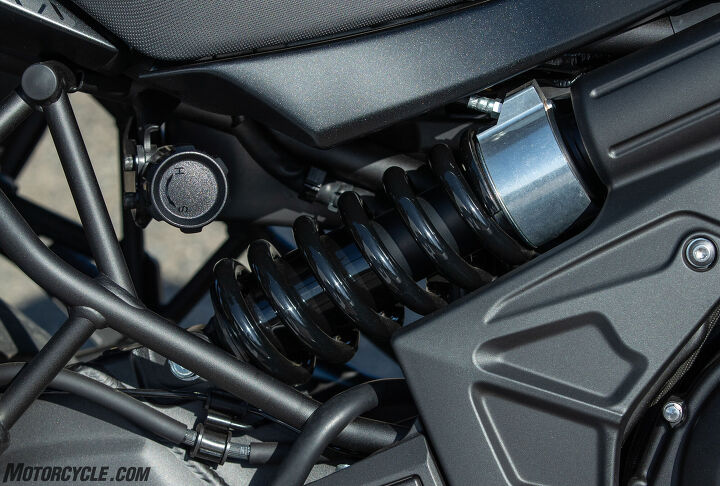
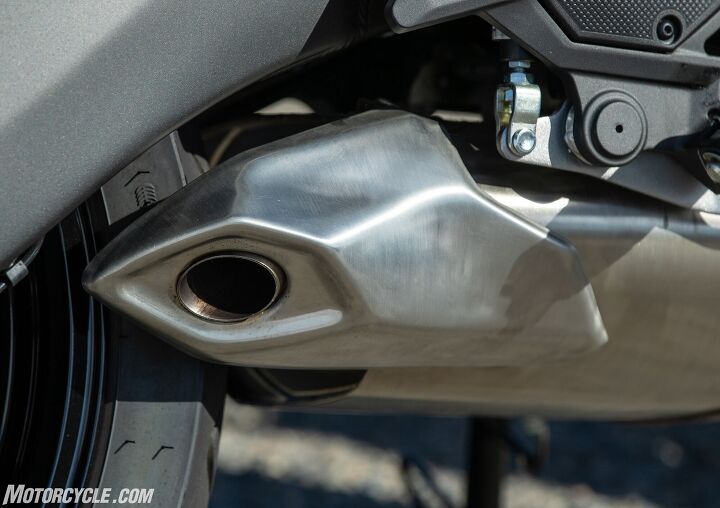
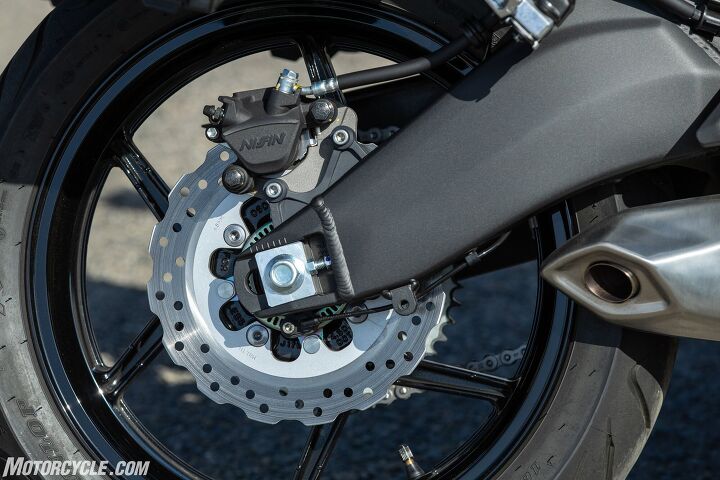
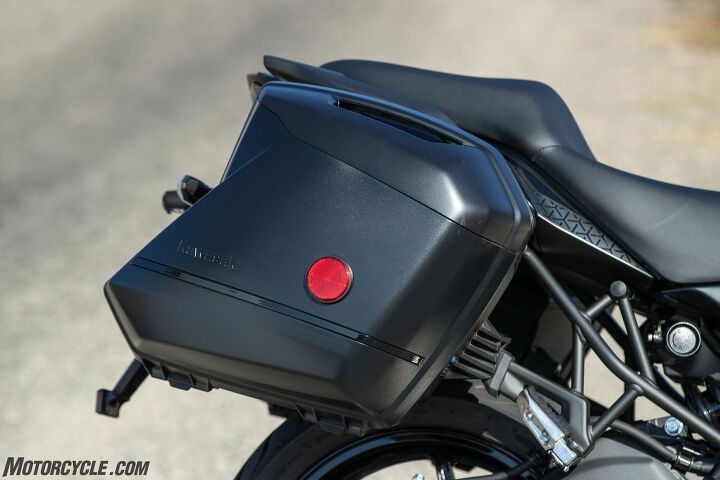
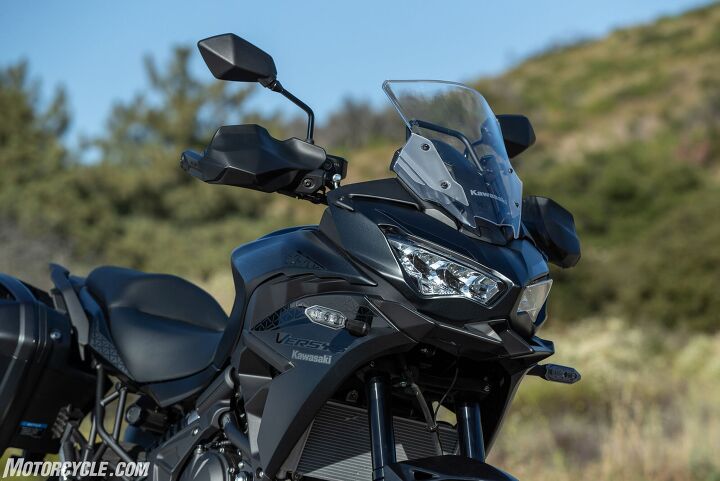
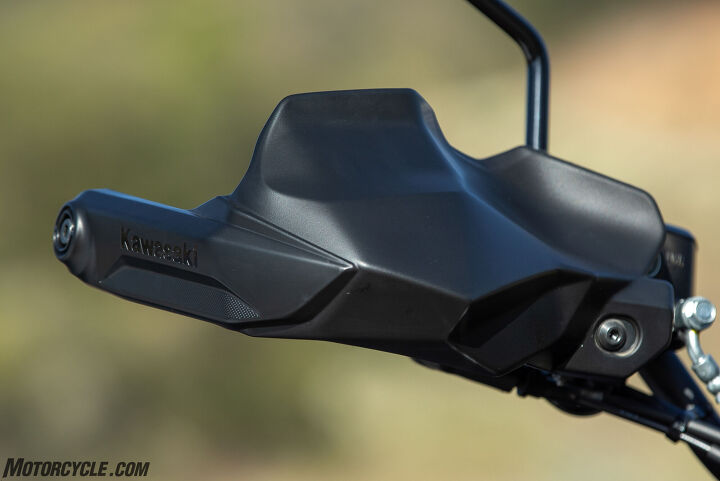
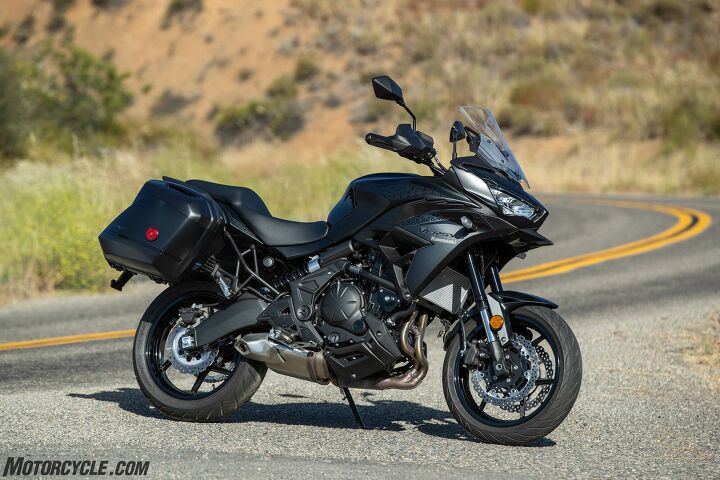
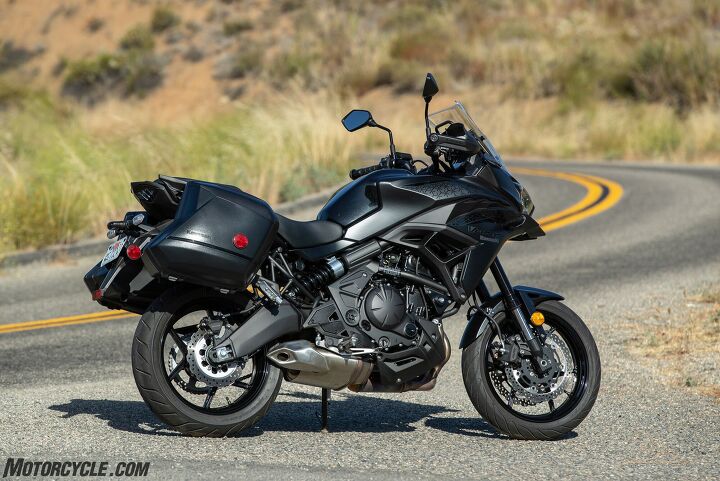
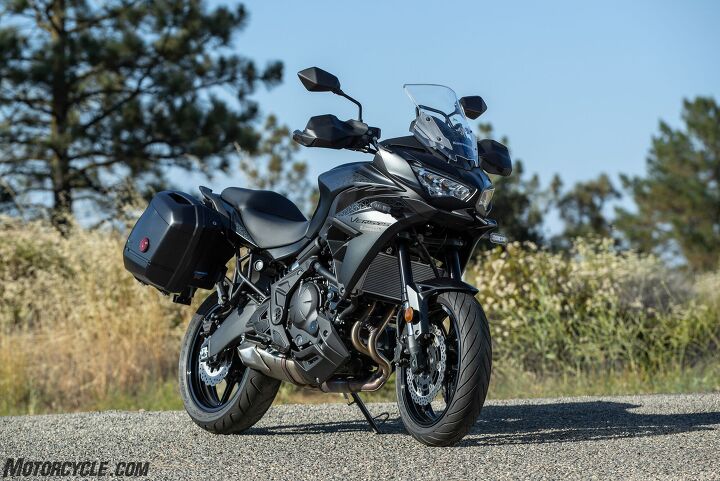
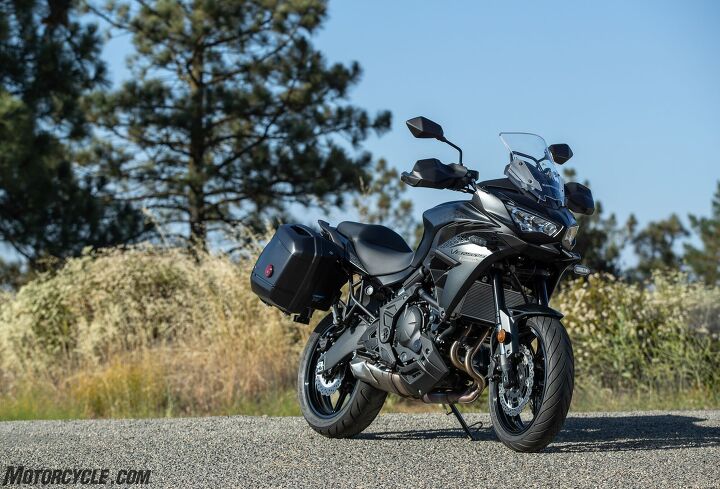
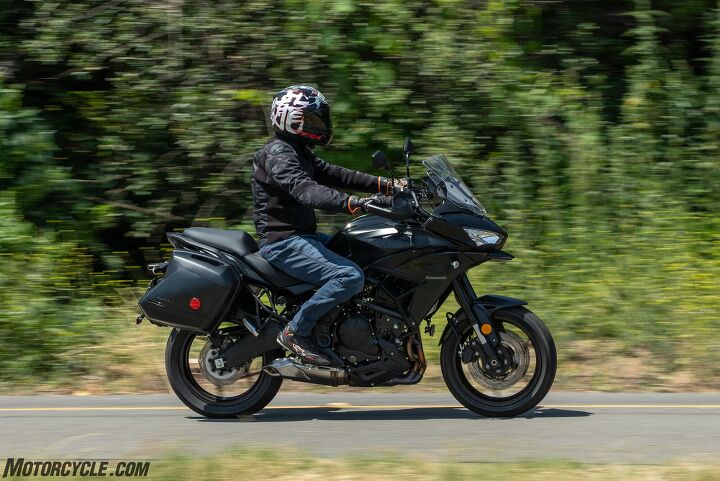
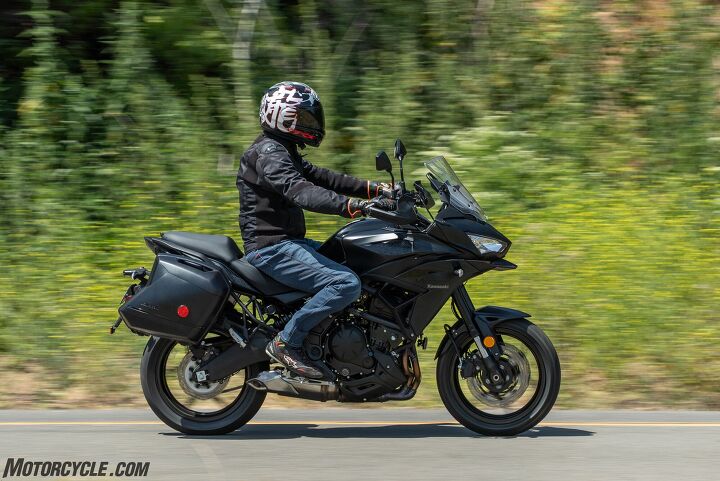
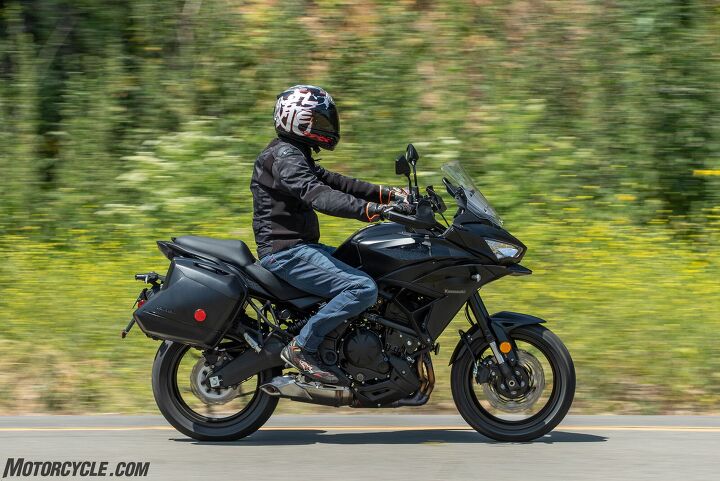
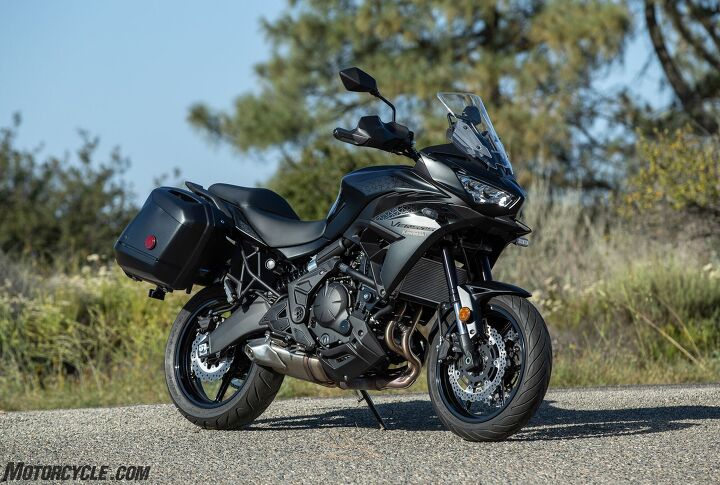
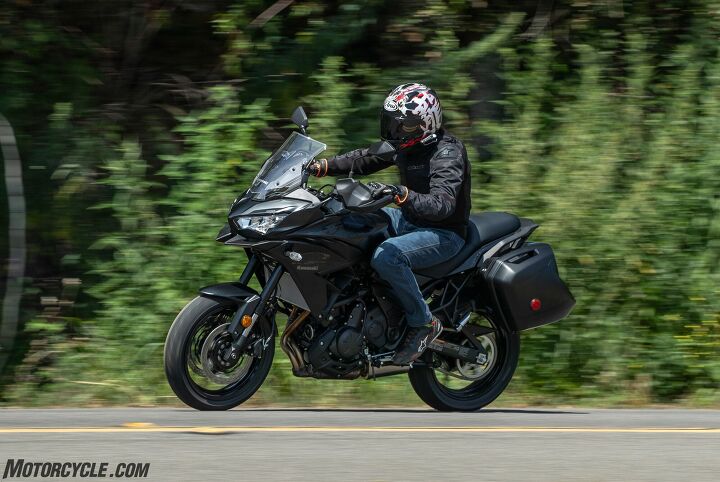
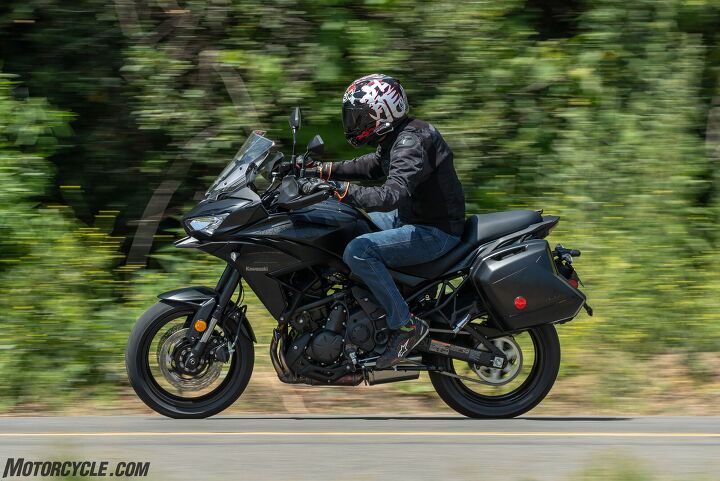
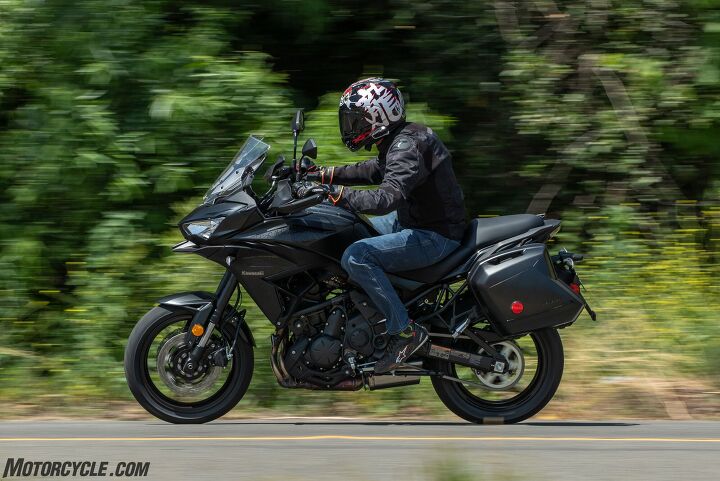
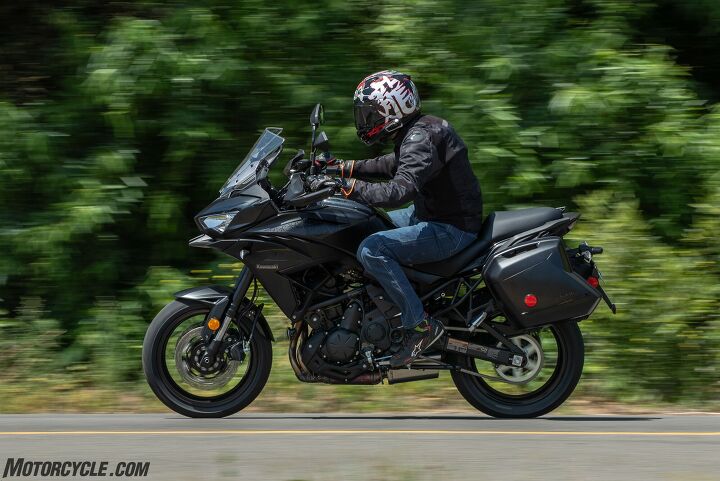
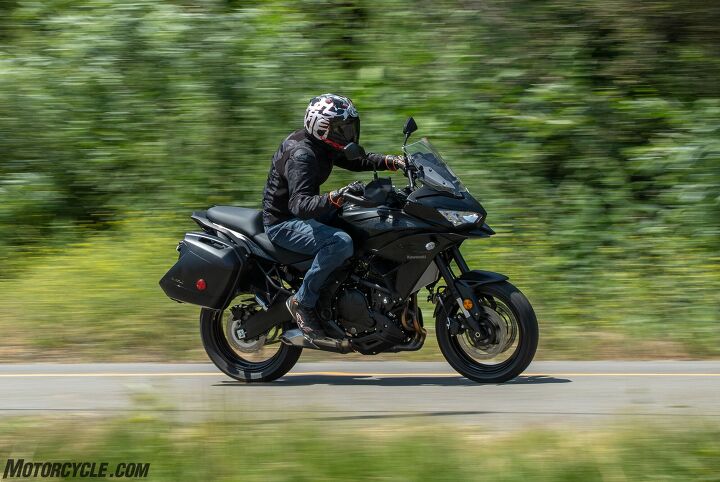
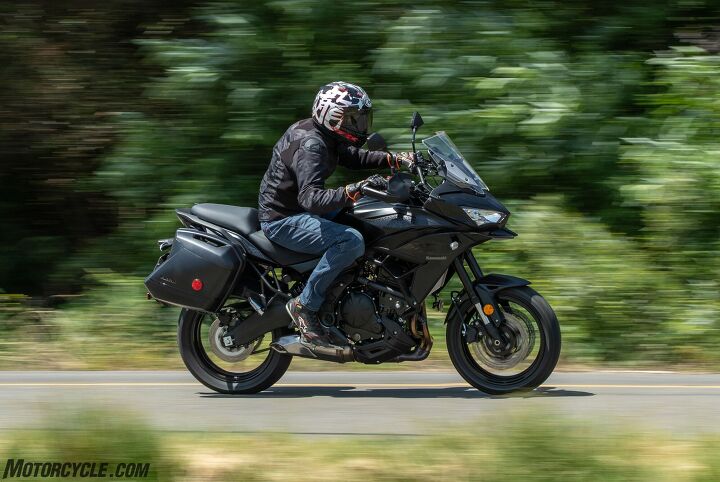
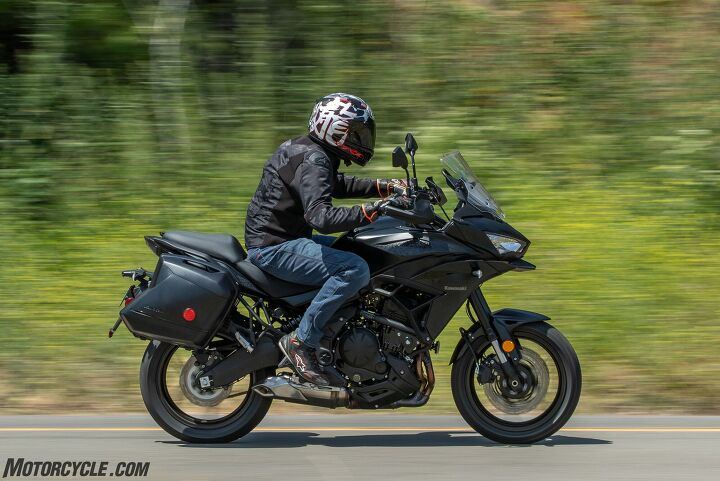
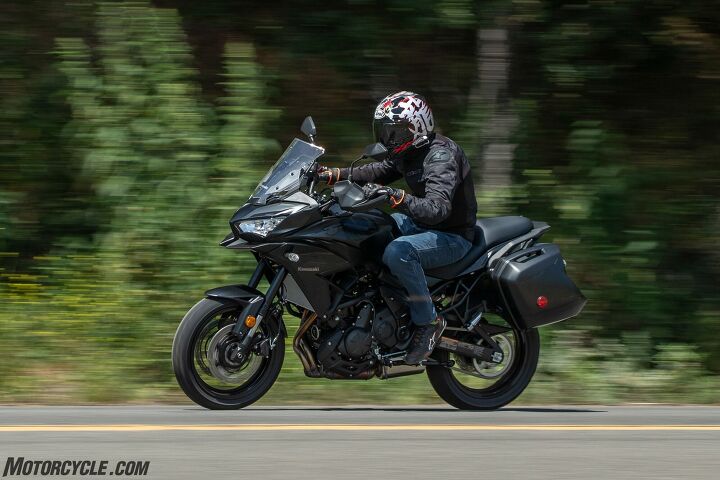
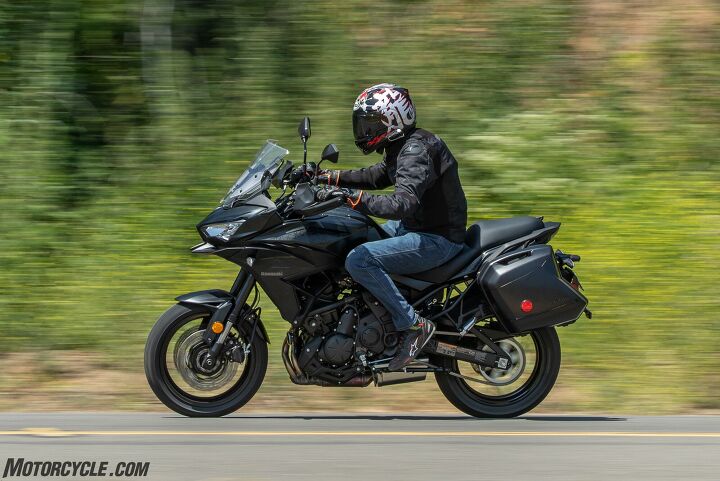
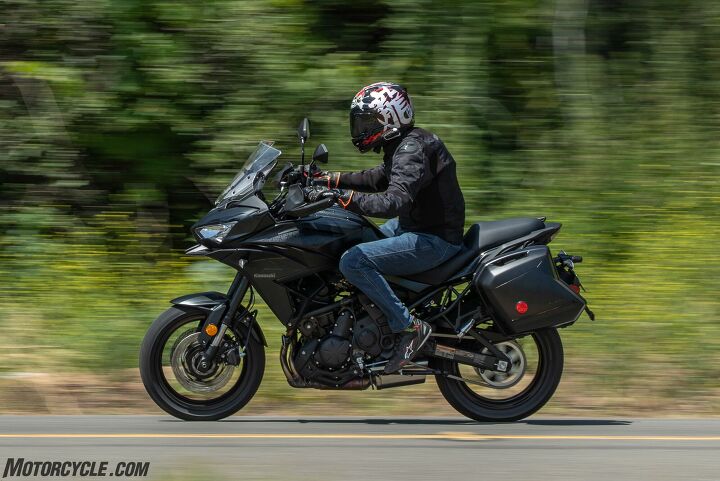
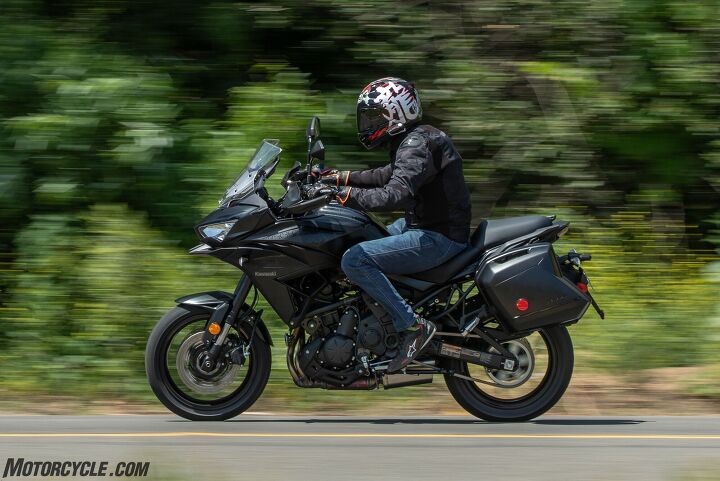
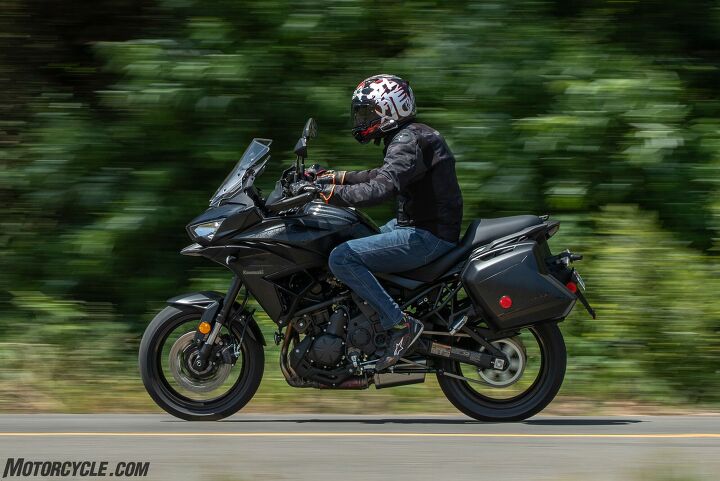
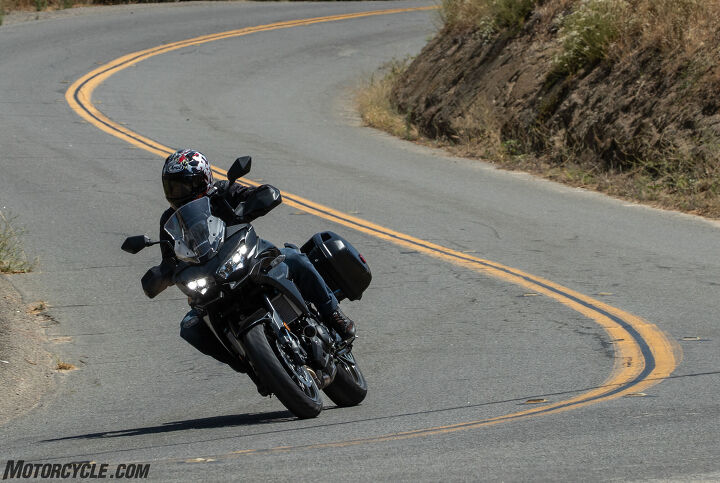
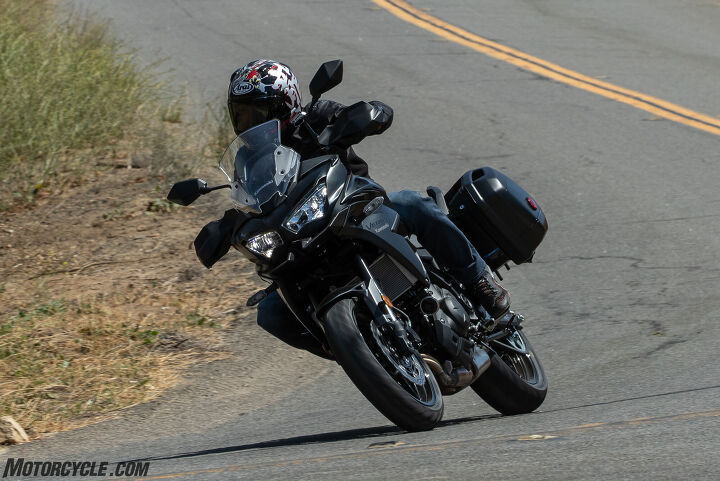
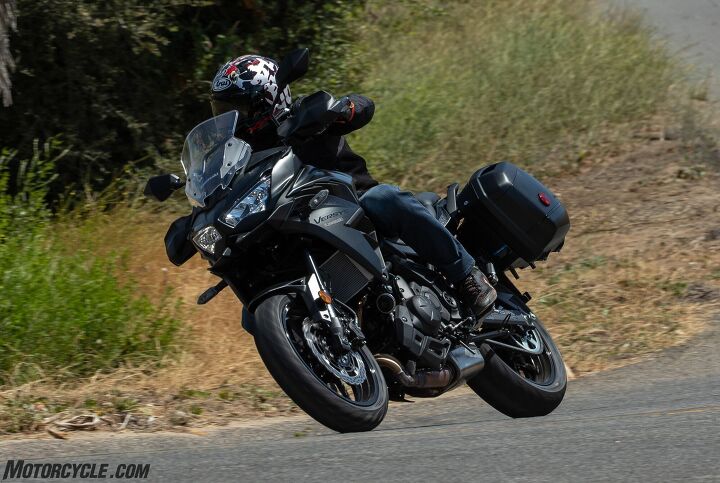
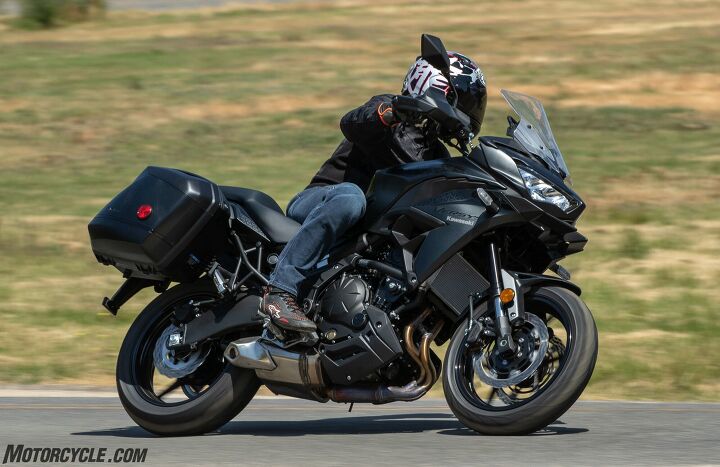
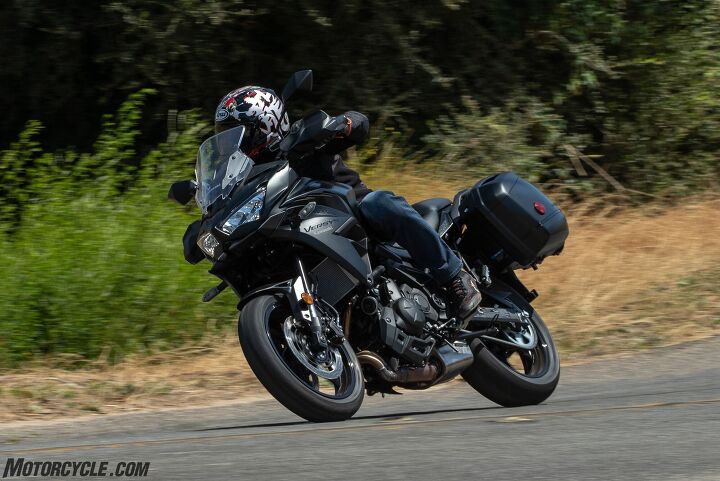
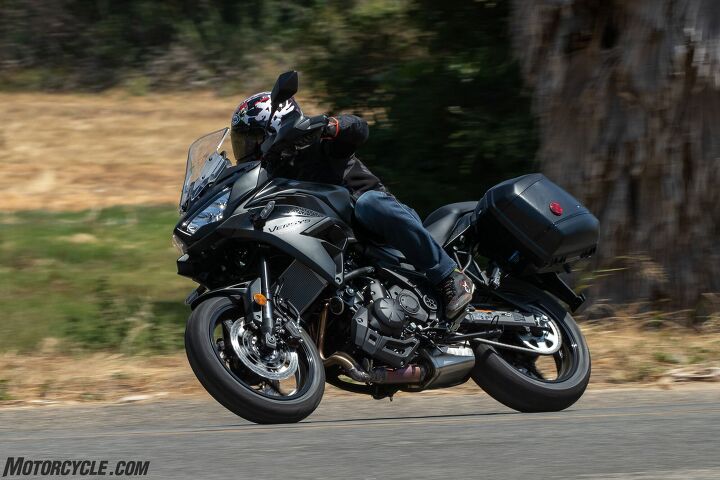
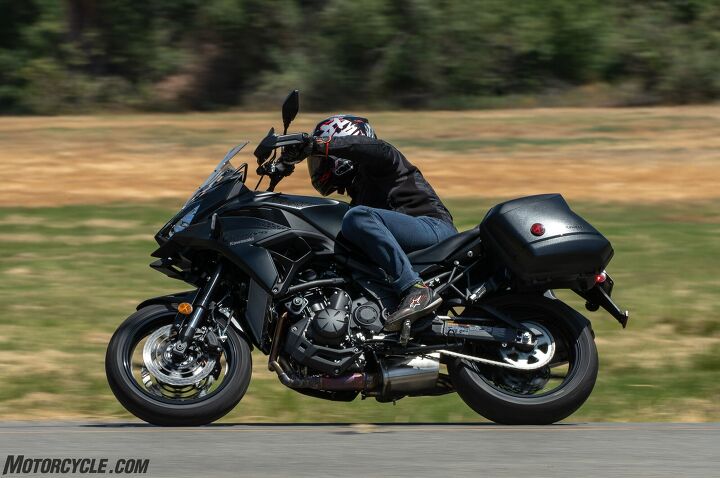
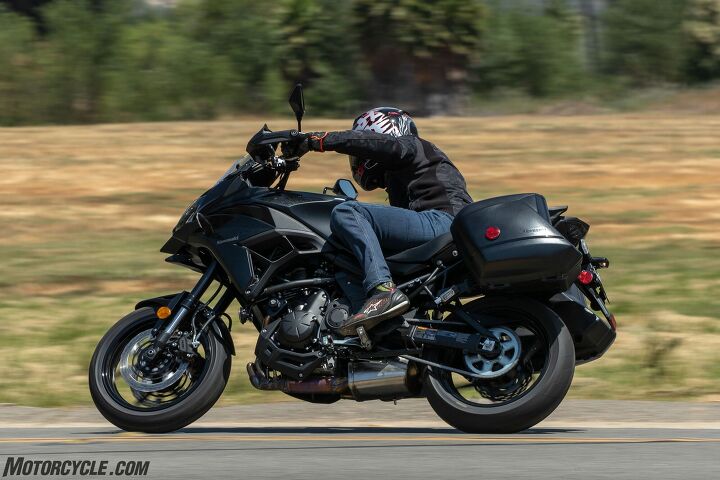
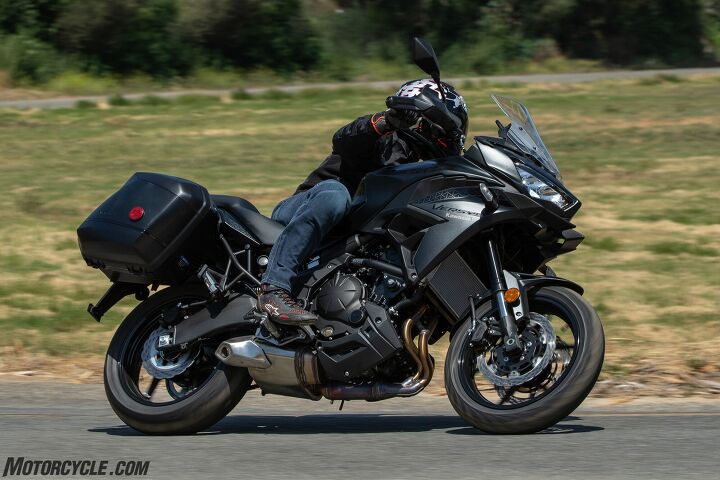
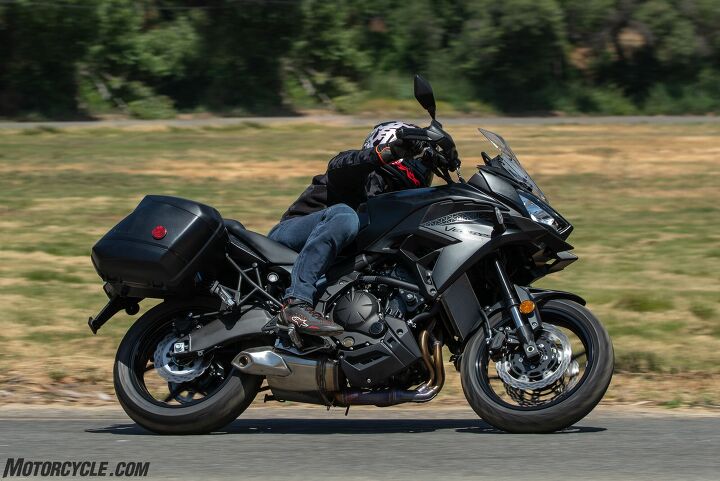
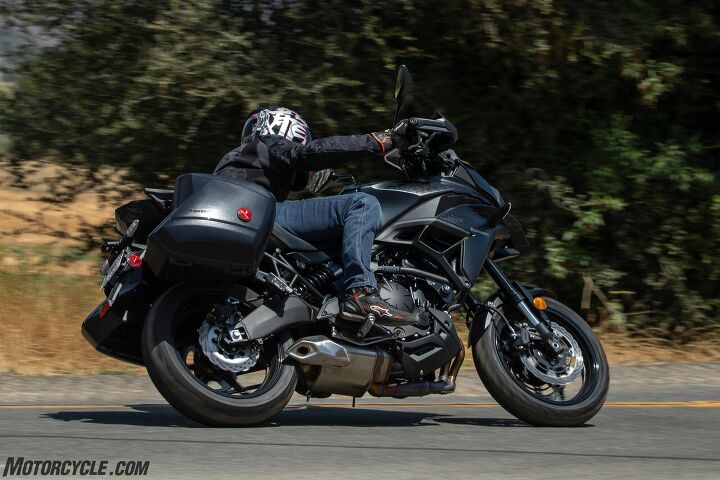
We are committed to finding, researching, and recommending the best products. We earn commissions from purchases you make using the retail links in our product reviews. Learn more about how this works.
Become a Motorcycle.com insider. Get the latest motorcycle news first by subscribing to our newsletter here.
The post 2022 Kawasaki Versys 650 LT Review – First Ride appeared first on Motorcycle.com.
Copyright
© Motorcycle.com


